- South Africa
- Turkmenistan
- South Korea
- Philippines
- Timor Leste
- Afghanistan
- Saudi Arabia
- United Arab Emirates
- Northern Ireland
- Isle Of Man
- Bosnia and Herzegovina
- North Macedonia
- Liechtenstein
- Netherlands
- Switzerland
- Czech Republic
- Antigua And Barbuda
- British Virgin Islands
- Cayman Islands
- Dominican Republic
- Puerto Rico
- Saint Barthelemy
- Saint Kitts and Nevis
- Saint Lucia
- Saint Martin & Sint Maarten
- Trinidad And Tobago
- Turks And Caicos
- US Virgin Islands
- Falkland Islands
- French Guiana
- El Salvador
- United States
- New Zealand
- Papua New Guinea
- Cook Islands
- French Polynesia
- Accessories
- Bags & Backpacks
- Horseback Riding
- Photography
- Maintenance
- Airport Hotels
- Bed & Breakfast
- Budget Hotels
- Business Hotels
- Family Friendly Hotels
- Gay Friendly Hotels
- Luxury Hotels
- Pet Friendly Hotels
- Pool Hotels
- Romantic Hotels

13 Best Shoes for a Safari
- Travel Gear
- 13 Best Shoes for a…
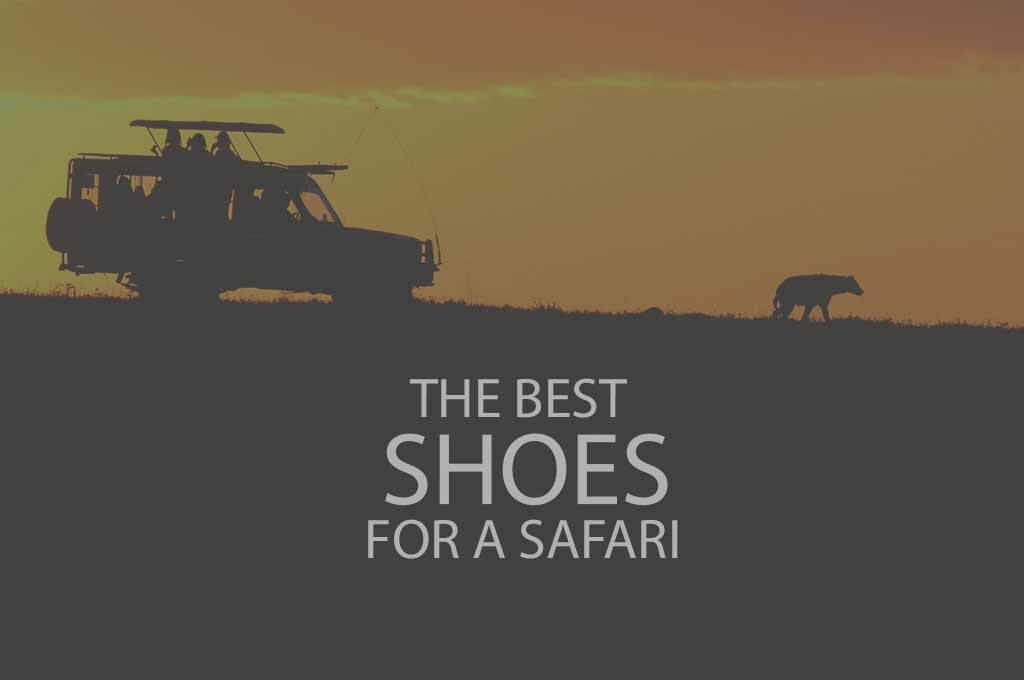
Whether you’re going in winter or summer, every weather is a good time for a safari trip. During summers, animals come to the water holes to cool off, affording excellent sightings. Winters in the forest are magical, with sightings as frequent as during summers. So, if you’re planning your next safari trip to, let’s say, the magical land of Masai Mara in Kenya, you can’t go without the best shoes for a safari. Safari shoes are waterproof boots to withstand extreme winter conditions or comfortable walking and running shoes for long safari trips.
In both cases, we’ve got excellent options for you. Also, you’ll find both men’s and women’s choices in this review, so no person gets left behind. The only effort you need to make right now is to read this review to help you choose the best shoes for your next trip. So, no matter which of the best safari destinations in Africa you plan to go to, we have a safari shoe for you.
Meanwhile, you might also want to check out the best binoculars for a safari .
Table of contents
Tfo hiking shoes, manfen women’s hiking boots, hkr women’s walking shoes, columbia women’s newton ridge hiking boot, umyogo mens athletic walking blade running sneakers, columbia men’s newton ridge plus ii hiking boot, salomon x ultra 3 gtx men’s shoes, new balance women’s fuelcore nergize v1 sneakers, stq women’s slip-on walking shoes, puma women’s carina sneaker, casmag women’s casual shoes, vibdiv womens walking sock sneakers, merrell men’s moab 2 vent hiking shoe, what are the best shoes for a safari, can i wear sneakers on a safari, is there a difference between men’s and women’s safari shoes.
Safari shoes have different requirements, one of which is that they should be super comfortable. That’s what the TFO Hiking Shoes offer. The shoes are mainly hiking shoes and are one of the best. The insoles have a special air circulation technology that relieves your feet as you move. It’s also the common EVA insole of hiking shoes. Thus, you guarantee an always comfortable feeling throughout the safari trip. For more comfort, the ankles and the collar are padded. Even more, the fabrics are tear-resistant. Thus, they suit a safari trip. Above all, these shoes offer very good traction on whatever terrain you walk on.
- These shoes are very comfortable
- They are tear-resistant
- These safari shoes are padded from inside
- They’re not waterproof
This time, we have safari boots instead of traditional shoes. Manfen Women’s Hiking Boots combine both the elegance with the practicality of a hiking boot. On the practical side, the boots are very durable. They come with a rubber toe cap and rubber outsoles. This provides maximum protection for your feet during a safari trip. On the aesthetic side, these boots look very stylish and bold. They will suit a kind of cowboy style. In addition, the boots are waterproof, and they can serve as snowshoes for hiking as well. One thing you need to take care of is the sizing. The seller recommends getting a larger size of these boots.
- These shoes provide protection to the feet
- They’re waterproof
- For a safari, these shoes are very durable
- They’re a bit stiff

As it appears from the name, HKR Women’s Walking Shoes are made for walking. This means they are extra comfortable walking long distances without feeling any pressure on their feet. This is mainly because of the insoles that are made of memory foam. You’ll feel like you are walking on a cloud. Further, the shoes have arch support to relieve heel pain. For the best safari shoes, you need comfort and traction. These shoes provide enough traction on difficult terrains. Also, they are very easy to put on and off. You need to slip your feet inside the shoes. Above all, the shoes come at a very affordable price, and you’ll use them for everything else, regardless of a safari trip.
- These shoes are available for a low price
- They offer good traction
- These shoes boast memory foam insoles
- They’re easy to put on and take off
- You won’t find the best feet protection in them
Columbia Women’s Newton Ridge Hiking Boot will be your new favorite safari shoes. The boots are made for difficult terrains. It has the proper outsoles and arch support needed for a long safari trip. Also, these outsoles offer an Omni-GRIP non-marking traction needed for walking on difficult terrains. One of the things we love about these boots is that they’re very fashionable. You can wear them on casual occasions. Finally, these boots are lightweight, so you won’t feel a bulk on your feet while walking. This detailed OutdoorGearLab review of these boots will tell you everything you need to know about them.
- They’re lightweight and comfortable to wear
- These shoes boast a fashionable design
- They offer an excellent grip
- They’re very expensive
UMYOGO Mens Athletic Walking Blade Running Sneakers are the option to go for when you need one-for-all sneakers. The sneakers are one of the best shoes for safari and any casual outing. They are suitable as shoes for running a 5k . This is because they’re super light and super comfortable. The fabrics are knit fabrics on the upper side and rubber for the soles. This gives the shoes a fair bit of flexibility. It’s distinguished from other shoes on this list. Another pro for knit fabrics is their breathability and lightweight. Thus, you can wear them while doing sports as well. These sneakers are available in many vibrant colors. This allows pairing the sneakers with jeans or sweatpants for a casual fashionable look.
- They’re available in many colors
- These shoes are very flexible
- They’re breathable and lightweight
- These shoes run bigger than usual
The second option we have is from Columbia, but this time for men. Columbia Men’s Newton Ridge Plus Ii Hiking Boot is one of the best shoes for a safari. No wonder why these are top sellers on Amazon. Although they are a bit expensive, the money you pay is worth it. These boots will last for years of excessive use. You can use them for hiking, safari, or even casual wear. The boots are available in all dark winter colors. These colors are suitable for safari because they won’t get dirty easily. Like the women’s version of these boots, they have the OMNI-GRIP traction system to walk easily on difficult terrains. Check out this detailed YouTube review of these hiking boots by Ultimate Survival Gear .
- For a safari shoe, they offer great traction
- They have versatile styling options
- These shoes boast a high-quality construction
- They’re a bit leaky
Compared to other safari shoes, Salomon X Ultra 3 GTX Men’s Shoes are very expensive. Yet, we chose to include them here on this list for a reason. The shoes have the best traction you can feel on any terrain. This feature is the top of all features for these shoes. It’s something all safari adventurers look for in their best shoes for a safari. Moreover, the soles, whether the insoles or outsoles, are extra convenient. You won’t feel any problems wearing these shoes for a whole day. Furthermore, you’ll enjoy waterproof shoes for wet, muddy, and even snowy weather. Above all, it’s easy to put on and off, thanks to the pull strap and elastic drawstrings for closure.
- These shoes offer very good traction
- This is a very comfortable pair of shoes with equally comfy soles
- The toe box is small
Marketed as lightweight women’s sneakers, New Balance Women’s FuelCore Nergize V1 Sneakers are one of the best shoes for a safari you can buy today. The shoes are made of mesh fabrics and synthetic fabrics as well. This combination stands for the flexibility and lightweight they come in. Plus, the midsole cushioning, coupled with the memory foam insoles, will offer the maximum comfort you can ever feel. As one of the best shoes for a safari, this New Balance pair offers a very sleek and low-profile design. This isn’t the typical bulky pair of boots you’ll normally wear on a safari. Yet, they are very functional for these kinds of trips as they’re extremely durable and comfortable, and that’s all you need.
- These shoes are extremely lightweight
- They have a very comfortable toebox
- They’re practical for everyday use
- They offer no arch support
The easiest pair of shoes you can pick for a safari trip is STQ Women’s Slip-On Walking Shoes . When we say the easiest, we mean it’s easy in every aspect. Starting with putting the shoes on. Wearing these shoes is just a slip-on. You do nothing except slip your feet inside the flexible shoes. Yes! They’re very flexible as they’re mainly fabrics that stretch a bit with your feet. Second, the shoes come in an incomplex design. It’s a very basic and easy design that goes with every outfit. As for the soles, they’re rubber soles to withstand different activities like walking, running, and whatever else you’ll wear these shoes in.
- These shoes are available at a very affordable price
- The shoes are very flexible and lightweight
- They get dirty very easily
We know you probably have heard of PUMA before, but did you know their sneakers are good for a safari? PUMA Women’s Carina Sneaker , you see here, is very common with men and women. We’re that you have one of those or at least thought of getting one of them before. Yet, we’re now presenting them as one of the best shoes for a safari. If you want to feel comfortable during the whole trip, don’t hesitate to get these sneakers. The sneakers might seem very casual to wear on a safari. However, those sneakers are one of the most durable options you’ll find on the list. We recommend you go for this black option as it won’t get dirty as easily as the white ones. Moreover, they are perfect Puma shoes for travel if you’re thinking of versatility of uses.
- This is a durable pair of sneakers
- It’s from a well-known brand name
- These sneakers are suitable for casual wear too
- They’re a bit small
Boots are for winter safari trips, but CASMAG Women’s Casual Shoes are for all-season safari. The shoes come with holes on the upper side for breathability. Thus, they’re suitable for summer weather. Furthermore, wearing thick socks to warm up your feet in winter is very comfortable. Apart from that, the inner side of the shoes is air-cushioned for your comfort. Thus, you can even run with these shoes on; how about a safari? Choosing these shoes is about going for the common and basic option you can wear for every other activity. Thus, it’s a price-for-value purchase.
- These shoes are breathable and are air-cushioned
- They’re available in different color options
- They are available in a stylish casual design
- They get wet easily
We extremely love vibdiv Women’s Walking Sock Sneakers for different reasons. One of these reasons is the unique shiny colors these shoes come in. We also love how lightweight these sneakers are. As the name suggests, they’re sock sneakers which means they feel like socks on your feet. What makes them perfect safari shoes is their lightweight, durable construction. They provide your feet with the comfort and breathability they need without being very flimsy on the ground. Above all, they’re easy to pack in a small travel bag so that you may use them for any trip.
- These shoes have an elastic, flexible design
- This is a low price
- They have no padding at the heels
Let’s end this list with something that is worth it. Merrell Men’s Moab 2 Vent Hiking Shoes are the best shoes for a safari as they feature everything needed for safari shoes. The shoes have a toe cap to protect your toes from rocks or whatever hard terrain you might be walking on. Also, the insoles are a bit foamy and comfortable. As for the fabrics, these shoes are made of suede and mesh fabrics. The mesh provides the required breathability, whereas the suede is good for the style. Although some people believe suede is for classic shoes only, these shoes have changed it all. The suede fabrics enhance the look, and at the same time, they won’t get ruined as they’re very good quality.
- These shoes fit perfectly and are comfortable to wear
- They’re made from high-quality materials
- They’re breathable
- They’re slightly heavy
How To Choose The Best shoes for a safari
Safari shoes are nothing different from hiking, walking, or travel shoes. A good pair of shoes for hiking and active use can be the best shoes for a safari. However, there are some features you need to make sure of in your safari shoes. Let’s check them out.
A safari trip means you’ll be walking, hiking, driving a beach buggy, or doing whatever activities all the time. Thus, you need an extra comfy thing on your feet. Always go for cushioned shoes with rubber outsoles to feel comfortable. Also, make sure they perfectly fit your feet.
There are different types of safari shoes. You can pick the boots for winter safari trips or wear casual sneakers. Both are good for a safari, but the weather determines what to choose. If it’s summer, pick a breathable pair of sneakers. Alternatively, in winter and snowy weather, get waterproof boots.
Price is always an important factor when purchasing anything. Some safari shoes are as cheap as $25, and others are $200+. You might like a pair of safari boots, but you can’t afford them. So, always decide on the budget before browsing the options. The best thing here is that you’ll always find something on a budget.
The best shoes for a safari are the comfortable shoes you’ll normally wear when doing any activities. These can be hiking boots or traditional walking and running sneakers according to the kind of safari trips you usually go on.
Of course, you can! Yet, make sure the sneakers are breathable if you’re traveling to a hot country. Also, ensure that the sneakers you choose are very comfortable to suit a safari trip.
Nothing is different between men’s and women’s options for a safari trip. You can even find options for men’s and women’s safari shoes from the same brand and series.
Author: Julie Wharton
As a solo traveler, I have discovered the freedom and adventure that comes from exploring the world on your own terms. With a backpack on my back and a thirst for new experiences, I have journeyed to some of the most remote and fascinating destinations on the planet. As a travel blogger, I share my stories and insights with fellow solo travelers who are looking to break free from the constraints of group tours and package deals. Whether you're a seasoned backpacker or a first-time adventurer, my blog is dedicated to helping you plan your solo travels with confidence and ease. From tips on finding the best hostels to recommendations for off-the-beaten-path destinations, I provide a wealth of information that will help you make the most of your solo journey. And with a passion for photography and storytelling, I bring each destination to life through vivid imagery and captivating narratives. So if you're ready to embark on an adventure of a lifetime, join me on my journey and let's discover the world together.
Leave a Reply Cancel reply
You must be logged in to post a comment.
Best Shoes for Kenya Safari & 6 Factors to Help You Choose
Going for a Kenyan safari is more of an adventure than a vacation. This means the kind of clothes you choose to pack will need to have a lot of thought put into them. One important item in your packing list will be the kind of shoes you wear. So as I plan to go out on safari myself it got me wondering, what are the best shoes for a safari in Kenya ?
The best shoes for a Kenyan safari are hiking shoes like the KEEN Women’s Targhee II Hiking Shoe . Most hiking shoes are lightweight, durable, can be used for everything from light walking to hiking. Hiking shoes score really well on all of the metrics of a Good Shoe for Safari and are a great shoe to take on a Safari. In this article, I’m going to break down what kind of shoes you need to wear when coming to Kenya and some of the factors you need to consider when choosing the pairs.
Things to consider when choosing a pair of shoes for a safari in Kenya
When choosing a pair of shoes for an African safari here are the things that you should consider:
- Flat : Heels are not appropriate when coming to Kenya for an African safari. You will spend a lot of time in the car and walk on surfaces that are not very even. I think this may be the best way to get yourself a rolled ankle so please avoid it.
- Closed : The kind of shoes you will choose should be closed. The main reason for this is you may sometimes have to walk on the streets of the towns in Kenya which are sometimes dusty or muddy. Read my article on what to wear in Nairobi for details. With closed shoes, you will also be able to protect your feet from mosquitoes.
- Thick sole : This is especially important if you’re going to do any hiking or walking in the bush. Most of the Kenyan Savannah will have plants with sharp Thorns that are one or two inches long. Having shoes that have a thick sole will prevent you from getting injured if you step on one of these.
- Breath well : the kind of shoes you choose need to breathe well. An average day in Kenya will have temperatures of 20-30℃. If you sweat easily you will find it very uncomfortable if you have a pair of shoes that don’t breathe well.
- Durable: it is very likely that you’re not going to be walking on paved surfaces at all times and this means that you may encounter the occasional rock or tree root and trip over it. The shoes you wear need to be durable enough to survive several tripping without getting ruined.
- Easy to clean : As I mentioned you will not be walking on a lot of paved surfaces and your shoes will get dusty or muddy. It is for this reason that you need to carry shoes that will be easy to clean with a wet piece of cloth.
Best women’s shoes for Kenya safari
Your Main pair of shoes : Based on the factors I have discussed above I’m sure you can be able to find a pair of shoes that fit this description in your closet. A pair of walking shoes or sneakers would be most appropriate.
Open shoes: I would also advise that you carry a pair of open shoes that you will use when in the vehicle, hotel or traveling. However this should not be your only pair of shoes.
Fancy dinner shoes : You may also want to carry a pair of fancy shoes for the evening dinners. These need to be stable enough to walk on uneven ground without making you fall.
If you in the mood to buy
If you would like to buy a new pair of shoes for your safari to Kenya, here are a few recommendations that I found on Amazon. They all had stellar reviews for the categories and I would recommend checking them out.
KEEN Women’s Targhee II Hiking Shoe

TIOSEBON Women’s Athletic Walking Shoes

ASICS Women’s Gt-2000 5 Running Shoe

Best Men’s Shoes for Kenya Safari
The choices for men are much easier since all you need to find is a good pair of comfortable walking shoes that can be used in different scenarios including evening dinners. You can safely carry one pair of shoes and you’ll be ok.
If you’re in the mood to buy a new pair
if you’re in the mood to get yourself a new pair of shoes for your safari in Kenya, here are a few options that you might want to choose from. I also did a bit of scouring for you on Amazon so you have a head start on making a choice for the kind of shoes that are best suited for a safari in Kenya.
KEEN Men’s Targhee II Hiking Shoe

ASICS Mens Gel-Venture 6 Running Shoe

Skechers Performance Men’s Go Walk 4 Incredible Walking Shoe

Best Kids’ Shoes for Kenya Safari
When it comes to kids, you will need to keep their feet protected from getting hurt when they stumble over a rock when they are running. Toe protection will need to be at the top of your list when choosing a shoe for them.
Sandal: KEEN Unisex Kid Newport H2 Sandal

Best shoes for hiking in Kenya
When choosing a hiking shoe for a safari in Kenya, you will need to think about where you’ll be hiking. If it is just a walk in one of Kenya’s forests like Karura, all you need is a pair of walking shoes that have good enough grip to prevent you from falling or slipping on wet trails.
However, if you’re going to be tackling a more technical trail you will need hiking shoes that are specialized for the job.
I would recommend the Keen Hiking boot . It is comfortable, lightweight and waterproof. I was surprised at how affordable this pair of keen boots was on Amazon considering how high rated they are.

Best Shoes for walking in Kenyan towns
When walking the streets of Kenyan towns you will need to wear closed shoes that are easy to clean. This is because most of the towns in Kenya don’t have paved sidewalks and are mostly dusty or muddy depending on the weather.
You will also need to choose a flat pair of shoes since you will not be walking on very uneven ground and you risk spraining your ankle if you wear raised shoes
Best Open Shoes for a Safari in Kenya
When choosing a pair of open shoes for your safari in Kenya, you will need to consider the following factors:
- Lightweight ; remember that you may not be using them as much and so they should not contribute a lot of weight in your luggage.
- Durable: of the things that I destroy the easiest are sandals. I’m a bit of a clutz and keep tripping over rocks and this is both incredibly painful and it destroys my shoes. If you are anything like me, you need to get a pair of sandals that can endure this beating.
- Easy to clean: your open shoes need to be easy to clean since they will be with the rest of your luggage. Keep in mind that all single use plastic bags are banned. This includes all zip lock bags that can be used to store muddy or dusty shoes. This means that you will have to clean your shoes well to prevent them from ruining the rest of your luggage.
If you’re in the mood of getting a new pair of open shoes, you can check out the following pairs I found on Amazon. I was looking for a pair with a great price and great reviews by people who have actually purchased them.
High End: KEEN Women’s Whisper Sandal
Mid range: teva women’s tirra sandal, budget: teva women’s w sanborn sandal, what socks should i wear.
When choosing a pair of socks, look for light absorbent socks that keep your feet dry. Socks that you would wear on a hike during summer are most appropriate.
Unless you’re planning to wash your socks, make sure that you come with enough pairs to last you your whole journey
Keep in mind that we may receive commissions when you click our links and make purchases. However, this does not impact our reviews and comparisons. We try our best to keep things fair and balanced, in order to help you make the best choice for you. As an Amazon Associate, I earn from qualifying purchases.
Antony Njoroge
Hi, I'm Antony & I'm from Kenya. I love traveling around Kenya when I get off from work and this website is a great way for me to share my local knowledge and tips that will help you travel well in East Africa. Having lived in East Africa my whole life, I share my personal experiences and knowledge with the goal of helping you optimize your East African Safari and make it an unforgettable expereince.
Recent Posts
Internet & WiFi in Kenya (A Complete Tourists' Guide)
If you are planning to visit Kenya any time soon, you might have wondered if Kenya has Internet and whether WIFI is easy to find. I have lived in Kenya all my life and I would love to answer this...
Is Mt Kilimanjaro Active? (And Should You Be Worried?)
If you are planning to visit Mt. Kilimanjaro like I am, you must have been doing a lot of research about your climb. During your research, you might have stumbled upon the fact that Kilimanjaro is a...

Hiking Boots Pros
Everything About Hiking Boots

6 Best Hiking Boots for African Safari (2023) Guide
Going on a safari is an exhilarating experience that many people dream of. Whether you are exploring the vast savannas of Kenya or trekking through the African bush, it is essential to have the right gear, and that includes proper footwear.
Choosing the right pair of hiking boots can make a significant difference in your comfort and safety while on safari.
In this blog post, we will explore the 6 best hiking boots for an African safari, taking into account factors such as durability, comfort, and protection.
We will also answer common questions that travelers have when it comes to footwear on safari, such as whether you need hiking shoes, if black shoes are ok, and what shoes to wear on safari in Kenya.
Whether you are a seasoned adventurer or a first-time safari-goer, having the right shoes can make or break your experience. So, read on to discover the best hiking boots for your African safari and get ready for an unforgettable journey.
Table of Contents
6 Best Hiking Boots for African Safari
Blundstone bl550 classic 550 chelsea boot, danner men’s mountain 600 hiking boots, red wing men’s iron ranger hiking boots, merrell men’s moab 3 hiking boots, dr. martens 1460 originals hiking boots, lowa renegade gtx hiking boots.

The Blundstone BL550 Classic 550 Chelsea Boot is an iconic and timeless design. It’s a Chelsea boot, meaning it’s easy to slip on and off with the help of stretchy side panels.
This makes it perfect for those who are always on the go and want a shoe that’s quick and easy to put on. The boots are designed to be calf-high, giving ample coverage and protection to the lower leg.
The boots are made from 100% leather, which is both comfortable and durable. Leather is also known for its ability to be broken in over time, ensuring the boots will mold to the shape of your foot and become even more comfortable with each wear. The rubber sole provides excellent traction and grip, making it suitable for a variety of terrains.
One of the standout features of the Blundstone BL550 is its waterproof capabilities. The leather upper is designed to withstand rain and moisture, keeping your feet dry and comfortable in wet conditions. This makes it a perfect choice for outdoor activities like hiking or camping.
- The elastic side panels make it easy to slip on and off
- The rubber sole provides excellent traction and grip.
- Few choices are available.

The Danner Men’s Mountain 600 is designed for the serious hiker. It’s made from waterproof suede and full-grain leather, ensuring it’s both comfortable and long-lasting.
The Vibram Fuga outsole with Megagrip technology offers superior grip on wet and dry surfaces, making it perfect for those who love to hike in any weather condition.
The Danner Dry waterproof protection keeps your feet dry even in the wettest conditions. This is important because wet feet can cause blisters, which can be incredibly painful and debilitating. The cushioning open-cell OrthoLite footbed provides all-day comfort, while the Vibram SPE midsole offers maximum rebound, comfort, and support.
The nylon shank and TPU heel frame enhance support and stability, making the Danner Men’s Mountain 600 a great choice for long hikes or rugged terrain. The boots are available in a variety of sizes, ensuring a perfect fit for everyone.
- Comfortable, sturdy, and waterproof.
- Excellent grip
- The nylon shank and TPU heel frame enhance support and stability.
- The price may be a bit high for some people.

The Red Wing Men’s Iron Ranger Hiking Boots are a classic and stylish option for any outdoor enthusiast. These boots are made of natural leather, which gives them a rugged and vintage look.
While natural leather can be prone to scuffs and marks, it can easily be rubbed out with a soft dry cloth. The Nitrile Cork sole provides excellent grip and durability on any terrain, making them suitable for hiking and other outdoor activities.
The bump toe design and double-layer leather toe cap and heel pocket provide ample protection and room for your feet, ensuring they stay comfortable and safe even on the toughest trails.
It’s worth noting that these boots may require a break-in period, so it’s best to wear them around the house for a few days before embarking on a long hike.
- The natural leather gives them a rugged and vintage look
- The Nitrile Cork sole provides excellent grip and durability
- The bump toe design and double-layer leather toe cap and heel pocket provide ample protection and room for your feet
- Natural leather can be prone to scuffs and marks
- They may require a break-in period

The Merrell Men’s Moab 3 Hiking Boots are a great choice for anyone in need of a waterproof and supportive hiking boot.
These boots feature a waterproof membrane that seals out water and lets moisture escape, ensuring your feet stay dry and comfortable even in wet conditions. The pigskin leather and mesh upper, along with the bellows tongue, help to keep out debris and other elements.
The Vibram TC5+ rubber sole provides excellent traction and stability on any terrain, making them a suitable choice for a wide range of outdoor activities.
The Kinetic Fit ADVANCED removable contoured insole offers reinforced heel cushioning for medium support, and the Merrell Air Cushion in the heel absorbs shock for added comfort. These boots also feature a molded nylon arch shank, which provides additional support and stability.
- The waterproof membrane keeps your feet dry and comfortable
- The Vibram TC5+ rubber sole provides excellent traction and stability
- The Kinetic Fit ADVANCED removable contoured insole with reinforced heel cushioning offers medium support
- They may not fit wide feet well
- They may not be as stylish as other options

Dr. Martens 1460 Originals Hiking Boots are a classic and stylish option for hiking and outdoor activities. Made from smooth, waxed leather, these boots are durable and long-lasting. The moisture-wicking, breathable lining keeps your feet comfortable and dry, even on long hikes.
The contoured SoftWair footbed provides excellent support and cushioning, with memory foam at the heel and an anatomically shaped arch support.
The air-cushioned rubber and PVC hybrid Grip-Trax outsole provide superior traction on any terrain. However, it’s important to note that these boots have a soft toe and don’t come with a safety toe cap, so they may not be the best option for those who need additional protection.
- Stylish and durable
- Moisture-wicking and breathable lining
- Contoured SoftWair footbed with memory foam cushioning and anatomically shaped arch support
- Superior traction with the air-cushioned rubber and PVC hybrid Grip-Trax outsole.
- No safety toe cap.

The Lowa Renegade GTX Hiking Boots are a comfortable and versatile option for any hiker or outdoor enthusiast. The boots have a shaft that measures approximately 5 inches from the arch, providing ample support for your ankles.
The waterproof Gore-Tex lining keeps your feet dry in wet conditions, while the Vibram Evo outsole provides excellent traction on any surface.
The boots also have a full-length nylon shank that provides additional support and stability, as well as a Climate Control footbed that wicks away moisture and keeps your feet comfortable. However, the boots may take some time to break in and may not fit everyone’s feet comfortably.
- Waterproof Gore-Tex lining
- Vibram Evo outsole provides excellent traction
- Full-length nylon shank provides additional support and stability
- Climate Control footbed wicks away moisture.
- May take some time to break in
- May not fit everyone’s feet comfortably.
Do You Need Hiking Shoes for Safari?
If you are planning to embark on a safari adventure in Africa, one of the important questions that may arise is whether you need hiking shoes or not. The answer is a resounding yes! Having the right footwear can make all the difference during your safari experience.
When you think of a safari, you might envision sitting in a jeep or a safari vehicle, but there are times when you’ll be out exploring the wilderness on foot. Hiking shoes provide the support and protection you need to traverse through different terrains such as rocky trails, muddy grounds, and even shallow streams.
Wearing the appropriate shoes also reduces the risk of injury from insect bites, thorns, and other sharp objects. Moreover, it can help to prevent slipping or tripping, especially when hiking up steep paths.
Are Black Shoes Ok on Safari?
If you’re wondering whether you should wear black shoes on a safari, the answer is that it’s not the most recommended color.
While black shoes may seem practical, they tend to attract heat and can become uncomfortably hot during the day. This can cause discomfort and even blisters on your feet, which can ruin your safari experience.
It’s best to opt for neutral-colored shoes such as brown, beige, or khaki, which blend in well with the natural surroundings. These colors are also less likely to attract attention from animals, which is crucial when you’re trying to get close to wildlife for a good picture.
What Shoes to Wear on Safari in Kenya?
When it comes to what shoes to wear on a safari in Kenya, there are a few things to keep in mind. Firstly, the terrain in Kenya can be quite diverse, ranging from grasslands and forests to mountains and savannas. Therefore, it’s important to choose shoes that are suitable for the specific terrain you’ll be encountering.
For savannas and grasslands, sturdy hiking boots with good ankle support are a good choice, as they can protect your feet and provide stability on uneven ground. For forested areas, lightweight hiking shoes with good traction are ideal, as they can help you maneuver through the dense vegetation.
It’s also worth noting that Kenya can get quite hot during the day, so it’s important to choose shoes that are breathable and comfortable. Materials such as mesh and Gore-Tex can help keep your feet cool and dry.
You can read our blog on the Best hiking boots for the Appalachian Trail
In conclusion, when preparing for an African Safari, the right footwear is crucial for a comfortable and safe experience. While there are a variety of shoes that can be worn on safari, hiking boots are recommended for their durability and support.
The 6 best hiking boots for an African safari offer a range of features and styles to suit different needs. It is important to consider the type of terrain, weather conditions, and personal preferences when choosing the best hiking boots. With the right pair of hiking boots, you can confidently embark on your African Safari adventure.

Tyler Looney is an avid hiking enthusiast and the author of HikingBootsPros.com, a website dedicated to providing helpful insights and advice on choosing the best hiking boots. His expertise and passion for hiking have made him a valuable resource for both beginner and experienced hikers alike.
Leave a Reply Cancel reply
Your email address will not be published. Required fields are marked *
Save my name, email, and website in this browser for the next time I comment.

Safari by Bata
Safari by bata is more than just made in africa; it is made of africa..
In the heart of Africa, Safari by Bata was born – a brand that embodies the spirit of adventure, diversity, and authenticity. More than just a shoe brand, we are the gateway to unforgettable memories, the symbol of comfort and quality, and the embodiment of adventure.
Crafted by skilled artisans with passion, no pair is the same, making them a reflection of Africa’s rich heritage. With Safari by Bata, you are not just a traveler; you are an adventurer, a dreamer, and a proud member of the Safari family. Safari by Bata is more than just made in Africa; it is made of Africa.
Available now at Zando, Edgars, Senqu and Takealot.

POPULAR PRODUCTS
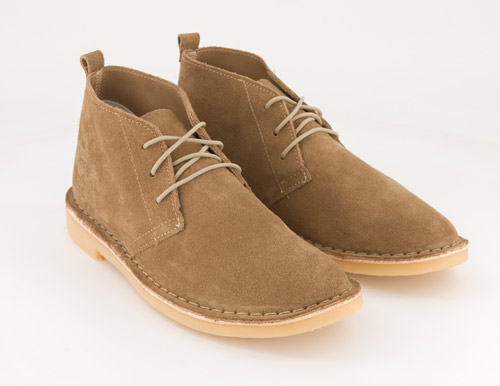
Nubuck – Tan
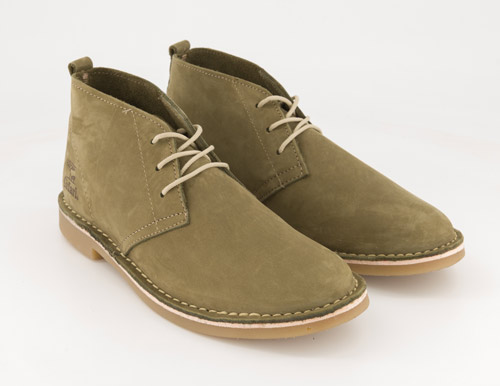
Nubuck – Olive
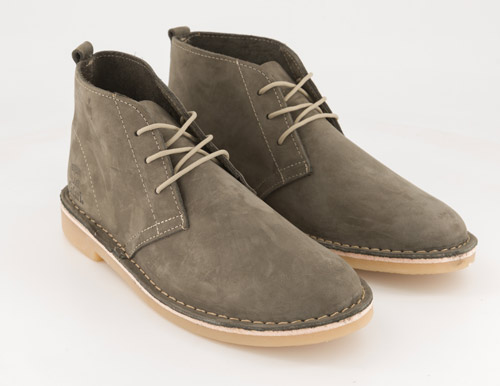
Nubuck – Charcoal
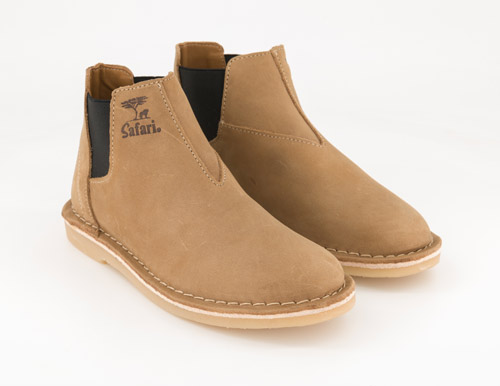
Canopy – Taupe
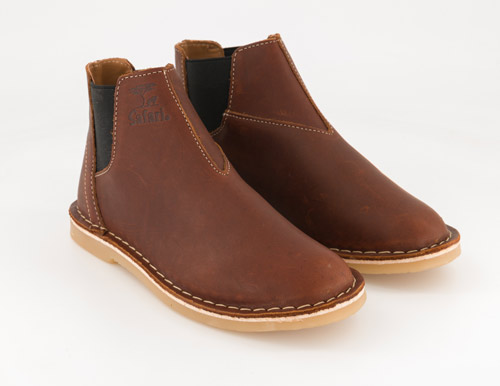
Canopy – Brown
Available at:.

Join the Safari mailing list

safari_by_bata

Calling all playlist fanatics and passenger princesses 📢🎧💿 We are putting together the ultimate road trip playlist and we need YOUR help. If you know us, you know we love adventure and nothing makes a moment better than the perfect song! So we have decided that we owe it to you and to all of our future adventures together to make a Safari Soundtrack. Share your song request in the comments and we will get to work! • #SafariByBata #LocalAdventures #ExploreSAHeritage #SafariTravelGuide ...
Nothing completes a weekend getaway like his and hers Safaris. Shop Safari on @zando.co.za, @edgarsfashion and @takealotcom. 📸 @cabin_fever_cpt • #safaribybata #madeinsouthafrica #zando #vellies #myzando #safarisouls ...
You asked and we listened. You can now find Safari shoes in selected @edgarsfashion and @builderssa branches across the country. So now it’s even easier to get your hands on our Voyage range. • #safaribybata #madeinsouthafrica #shop #vellies ...
Safari was born out of Kenya in the 1960s, and decades later, we are still committed to offering you the finest quality footwear, made of Africa. Happy Heritage Day South Africa! Join us as we celebrate the enduring spirit of Safari Souls across Africa. 🇿🇦🌄👣 • #HeritageDay #SouthAfrica #SafariHeritage #MadeOfAfrica ...
NEW COLLECTION ALERT! Introducing our locally-crafted leather sandals! We’ve reimagined your beloved Safaris and designed a range of stylish footwear for warm and sunny days. Get your favourite pair @zando.co.za 📸 @michelleriverphotography • #SafariByBata #MadelnSouthAfrica #SafariSandals #NewProductLaunch ...
From mountain peaks and urban streets to waterfalls, our shoes are built to take you anywhere adventure calls 🌍🥾 Shop Safari @zando.co.za, @edgarsfashion and @takealotcom. 📸: @travelsofarmando • #safaribybata #madeinsouthafrica ...
The wait is almost over. Stay tuned to our page for our new collection. Any guesses on what’s coming? 😉 📸 @shannonmichelle.co • #safaribybata #madeinsouthafrica #newcollection #comingsoon #SafariSneakPeek ...
Living life on the edge in our Olive Odyssey vellies. Shop Safari at @zando.co.za, @edgarsfashion and @takealotcom 📸 @curteisroberts • #safaribybata #madeinsouthafrica #vellies #edgarsfashion #builderssa #safarisouls ...
Safari is celebrating Heritage Month and we want to share the local love with you! All you have to do is follow @safari_by_bata, @capetowngin, @stanley_southafrica and @manolismunchies then tag 2 friends in the comments and you can stand a chance to win a Heritage hamper from us! Giveaway closes at 11PM on Sunday 10 September. Winner will be announced Monday 11 September. Visit www.bata.co.za for T`s & C`s. • #safaribybata #Competition #HeritageDay2023 #LocalisLekker ...
Who needs a passport when there`s so much to discover nearby. Trust us, we`re all about embarking on local adventures. Here are some of our favourite heritage spots to include on your next adventure! 🌄🚗 • #SafariByBata #LocalAdventures #ExploreSAHeritage #SafariTravelGuide ...
@dj_nightvisionza rocking our Men`s Adventure boot this winter. Get yours for only R699 @zando.co.za! 📸 @samora_chapman • #safaribybata #madeinsouthafrica #zando #vellies #myzando #safarisouls ...
The right pair of shoes can make all the difference. Complete your look with the Safari Mens Adventure boot. Available online on www.zando.co.za 📸 @samora_chapman @dj_nightvisionza • #safaribybata #madeinsouthafrica #zando #vellies #dailydoseofadventure #safarisouls ...
Privacy Overview
Sign in or register.
Registration is free and easy!
- Faster checkout
- Save multiple shipping addresses
- View and track orders and more
- Kenya Safari Tours
- serengeti Safari
- Destinations
- Hotels & Lodges

- Sign in / Join

The Best Shoes for a Safari

Choosing the wrong footwear can make your safari a sour one.
Getting the wrong shoes can actually make or break your safari trip. Especially if you will be venturing into the African wilderness where there are no shops or retail store to get a shoe replacement.
This article will help you identify some comfortable shoes that you can take on your African safari.
Make sure you have walked them in before you depart for your safari so you are comfortable and comfortable with the shoes you choose.
Table of Contents
While traveling you want to minimise on travel accessories and definitely leave fins, goggles and gadgets at home. Same with shoes only carry the shoes you are going to use on your travel.
You will need some light comfortable shoes or even trainers for whe you are in the cities and towns. You will need hiking shoes if you will be on safari and possibily walking on the African savannah. And finally you will need a pair of sandles or flip flops is you will be spending time at the beach and also for the evenings when you are at the lodge or hotel.
If you are walking through muddy forest conditions, sand, or river crossings, a medium-high-rise, waterproof boot with a built-in tongue will keep water and sand out and keep you comfortable.
You should expect your hiking boots to show less dirt if they are darker. Go for a comfortable, strong, and lightweight pair of shoes. For wet conditions, you must purchase a boot with traction in its soles, and you should have higher ankle padding for support and to prevent pesky ants.
If you are paranoid about being bitten by a snake, wear mid- or tall hiking boots (safari boots) instead of low hiking shoes for your ankle protection. Wearing tall hiking boots is overkill for me personally, and they can be very uncomfortable in the hot months
Don’t Pack Too Many Shoes
It is also important to pack light. Shoes are often heavy, bulky travel items and will cost you more with the airlines and also be an inconvinience while traveling.
What Kind of Shoes Should You Pack?
Consider leather shoes. Leather shoes are usually water resistant and easy to clean. If you walk thru mud, it’s much easier to throw the leather into the sink to wash which is not the case with cloth shoes and sometimes even trainers.
Synthetic safari boots do not have the classic look, but they weigh less and have more flexibility than leather boots which tend to be more expensive. In fact, most safari guides these days opt for these new style of boots due to their practicality and comfort. Why Sometimes You Need to Just Wear Normal Shoes
Weight of the shoe is also a very important factor. Finding a lightweight and durable boot is essential for walking safaris. The boot must still be able to offer you arch support and provide stability.
Our Top Picks Best Safari Shoes

Rockport Men’s Storm Surge Water Proof Plain Toe Boot
Why We Love Them
- The textile lining enhances breathability, ensuring a comfortable feel throughout the day.
- The EVA outsole and footbed deliver flexible, lightweight impact absorption for a smooth and effortless stride.
- Featuring truTech technology, these shoes offer additional lightweight shock absorption, reducing foot fatigue.
- Equipped with Hydro-Shield, the seam-sealed waterproof construction and materials provide reliable protection against the elements, keeping your feet dry in wet conditions.
Rockport Men’s Storm Surge are light very comfortable for men.
The Kind Of Sandals You Should Pack
You should also bring a pair of sandals or flip flops for pool areas if you will be spending some time at the pool.
Also if you are planning a coastal or beach vacation, flip flops or sandals would be appropriate.
In hot weather, you can wear flip flops everyday, but I prefer good quality sandals that have a thick sole. To avoid irritation, thick soles are designed for comfort.
You can use them to walk around camp, you should choose thick-soled sandals. Thorns are an issue in Africa, and thin-soled sandals will not protect your feet.
The best sandals I have used are from companies that make high-quality sandals that last a long time even after your African safari adventure.
It is important to pack light when going on an African safari. Comfort is very important and you shouldn’t place too much weight on your feet. It is also important to dress accordingly at the lodge and beach.
RELATED ARTICLES MORE FROM AUTHOR
What to pack for nairobi, what to pack for zambia, what to pack for serengeti safari, leave a reply cancel reply.
Save my name, email, and website in this browser for the next time I comment.
POPULAR ARTICLES
Best camera for african safari, best mozambique beaches, fun activities and festivals to attend when visiting colombia, diani beach safari tours, popular categories.
- beach vacations 5
- Travel Accessories 4
- Travel Safety 3

- Saudi Arabia

- Apple Store
- Google Play
Mobiles & Tablets
Basic phones, smartphones, mobile & tablet accessories, computers & software, computer accessories, keyboards and mice, computer peripherals, computer components, computer servers, print, copy, scan & fax, printer consumables, thermal printer, copier accessories, barcode scanner, laptop accessories, circuit components, electronics, televisions, led and lcd tvs, camera accessories, surveillance cameras, audio and video, portable audio & mp3, cables & cords, electronics accessories, air purifiers and humidifiers, sewing machine, vacuums cleaners, parts and accessories appliances, irons and steamers, kitchen & dining, water filtration and softeners, bathroom accessories, bathroom fixtures, linens & bedding, photo frames, candles and holders, carpets and rugs, seasonal decor, curtains-blinds-and-shutter, home fragrance, gift baskets, photo albums, household supplies, outdoor living, home security.
- Fashion & Beauty
Men Activewear
Men underwear, men jackets and coats, men pajamas, men swimwear, women activewear, women-swimwear, women underwear, women uniforms, women outerwear, women robes, women jackets and coats, women pajamas, women pants, women pullover, women shorts, women socks, women shirts, clothing accessories, clothing accessories for men, gloves for men, eyeglasses for men, bandanas & headties for men, hats and caps for men, scarves for men, sunglasses for men, belts for men, clothing accessories for women, hats and caps for women, belts for women, eyeglasses for women, bandanas & headties for women, scarves & shawls for women, sunglasses for women, gloves for women, unisex accessories, hats and caps.
- Shoes For Men
Men Slippers
Men oxford shoes, men outdoor shoes, men sandals, men sneakers, shoes for women, women sandals, women oxford shoes, women slippers, women sneakers, women outdoor shoes, women loafers, women boots, women flats, luggage & bags, laptop bags, jewelry & watches, necklaces for women, bracelets for women, necklaces for men, bracelets for men, baby furniture, baby & kids clothing, kids activewear, kids-rompers, kids swim clothes, kids shirts, kids underwears, kids shorts, kids dresses, kids pajamas, kids traditional clothes, kids skirts, kids jackets and coats, baby accessories, kids hair clip, kids scarves, kids gloves, kids bracelets, kids earrings, kids watches, kids sunglasses, kids-hats-and-caps, baby transport, strollers & seats, baby carrier, baby feeding, baby bathing, baby blankets, team sports, water sports, racquet sports, exercise & fitness, outdoor recreation, bicycle helmet & accessories, books & entertainment, musical instruments, band and orchestra, wind and woodwinds, acoustic drums, electric drums, electric guitars, acoustic guitars, dj and karaoke, dvds & videos, book accessories, board games, food & beverages, health, beauty & perfumes, office equipment, browse by category.

Bata Comfit BATA SAFARI BOOTS Details
- The best price of Bata Comfit BATA SAFARI BOOTS by Jumia in Kenya is 5,819 KSh
- Available payment methods are Cash on Delivery Credit Card
- Delivery fees are 150-32000 KSh , with delivery expected within 1-11 day(s)
- Similar products to Bata Comfit BATA SAFARI BOOTS are sold at Jumia with prices starting at 7,251 KSh
- The first appearance of this product was on May 01, 2023
- Amongst similar products of Bata Comfit BATA SAFARI BOOTS the cheapest price is 5,250 KSh from Jumia
Technical Specifications
Similar products, payment methods, delivery time, delivery fees.
/yaootaweb-production-ke/media/crawledproductimages/4de55620ea02e4c9ba32e67e0030a1872a7f7968.jpg)
Bata Comfit BATA SAFARI BOOTS
Cash on delivery credit card, 1-11 day(s), 150-32000 ksh.
/yaootaweb-production-ke/media/crawledproductimages/a3aaa93a984ed3ef28b9e6f762186ab5ea952a94.jpg)
Bata Comfit BATA SAFARI BOOTS SZ
/yaootaweb-production-ke/media/crawledproductimages/9671cbe66067486c3dfa1981f9c0c991cdb0b861.jpg)
Bata Comfit BATA SAFARI BOOTS SZ 44/10
/yaootaweb-production-ke/media/crawledproductimages/f8c4762928d8bb28df12cbba0ce13087a7c9ec8e.jpg)
Bata Comfit BATA SAFARI BOOTS SZ 42/8
/yaootaweb-production-ke/media/crawledproductimages/1fcd6e70f91d0429e3ecb0e1863415268989a5b3.jpg)
Bata Comfit BATA SAFARI BOOTS SZ 41/7
/yaootaweb-production-ke/media/crawledproductimages/5b37f6d475c3781b9199a065cf44e70bb6f174f7.jpg)
Bata Comfit BATA SAFARI BOOTS SZ 43/9
Jumia's description.
- Hand stitched with the best quality cowhide at the Bata factory in Limuru, Kenya the modern Safari is available in a variety of finishes and styles for men and women and stands up to the roughest treatment.
- After 50 years, this original indigenous shoe known for its rugged finish and comfortable fit remains unchallenged in its superior quality and enduring popularity.
Top Products in Men Boots more
Reviews of bata comfit bata safari boots.
- No reviews exist yet for this product.
Video Reviews of Bata Comfit BATA SAFARI BOOTS

- Client Reviews
- Safari Blog
- Send an Inquiry
- Map of Africa
- Contact Details
- African Safari Cost
- Travel Insurance
- You are here
- The Budget Safari Blog
- What to Wear on a Safari…

What to Wear on a Safari in Kenya? (best African safari clothing)
Posted by Stephanie Parker on January 11 2023 in Safari Tips & Travel Advice Enquire Now!
Planning a trip of a lifetime to East Africa and wondering what to wear on safari in Kenya? We’ve got you covered!
African safaris are truly life-changing experiences - you will create memories you’ll treasure forever - and brilliantly, East Africa has some of the continent’s most legendary wildlife-spotting destinations, so you won’t regret booking a Kenya safari for a minute!
In order to get the most from your safari in Kenya, however, you’ll want to make sure you come prepared with the right gear, and if there’s one thing our African travel experts know about, it is safari gear!
So look no further for your complete guide on how to dress perfectly for your Kenya safari with this helpful article…
Practical comfy clothing for African safaris
For starters, you want to make sure you’re comfortable during your safari in Kenya.

As a result, choosing thin, loose clothing is a must.
Cotton can often be the best choice, as it’s a breathable natural fabric that helps you stay cool.
Garments with pockets are also a good idea when it comes to what to wear on your Kenya safari.
You’ll probably have a lot of things that you’ll want in easy reach during your trips in the park, including your camera at the ready, along with spare lenses and lens cleaning equipment; not to mention your hand sanitiser, sunglasses, and hat!
Having pockets makes keeping things close at hand a lot easier!
Neutral colours in the bush
There’s a reason you so often see people wearing khaki on safari - it blends in with the surrounding habitat! You don’t want to be spotted by the wildlife before you spot them, so the rule to dressing for a safari in Kenya is to try to stay camouflaged!
With this in mind, you’ll want to choose clothes in neutral earthy tones that match the surroundings - beige, brown and grey are perfect choices.

You can get pretty dusty and dirty on game drives and walking safaris too, so it’s sensible to avoid white and cream.
And a top insider tip from our African travel experts is to avoid wearing blue and black as well, as these colours can attract tsetse flies.
Warm safari clothing
You may not realize, but it actually can get very chilly on safari in Kenya!
Despite the glaring heat of the midday sun in this country, many game drives take place at dawn or dusk, when it can be pretty fresh to say the least!
With this in mind, you’ll definitely want to bring a warm sweater or fleece, as well as a thin windproof jacket and a warm hat with you.

A top tip from our African travel experts is to also pack a buff (a round scarf, also sometimes known as a snood). These are handy and versatile as they can be pulled right up over your neck and chin and up to your nose on chilly mornings!
Long sleeves and trousers
There are lots of reasons it makes sense to cover up while on safari in Kenya and not least to help keep you warm.
In addition, you’ll want to stay protected from the strong sun, as well as limit your exposure to any mosquitos, insects, and thorny brambles.
Coming prepared with long-sleeved tops and trousers is, therefore, a great way to do this.

Mosquitos are prevalent in Kenya and malaria is present in some areas of the country, so you will want to protect yourself.
Mozzies can be a particular problem at dawn and dusk - when game drives often happen - so wear long trousers and sleeves to prevent them from biting.
Another top tip is to tuck your trousers into your socks so the cheeky insects can’t bite your ankles!
And no packing list for a safari in Kenya would be complete without insect repellant. Ones that contain at least 40% DEET are recommended when travelling in areas where malaria is found.
Closed-toe footwear
Covering up from mosquitos and insects is one reason closed-toe shoes are also strongly advised when it comes to what to wear on safari in Kenya.
It’s also more practical and safe, protecting your feet from thorny plants, and when walking in rough or rocky terrain.
For this reason, do not bring your sandals on a Kenya safari!
Trainers are fine if it’s the dry season and it’s not too cold.
If you are going in Kenya’s wet season, however, which runs from March to May, you’ll need boots as it can get muddy in some places, as well as a good waterproof jacket.
Boots may also be a better choice for chilly morning game drives.
Protection from the sun
The equator runs right through Kenya, so the sun in this country is strong!
Make sure you take proper precautions, therefore, including packing a good sunhat and sunscreen. Game drives can often happen in open-top vehicles, and you may also leave the vehicle for lunch breaks and walking safaris.
Also, don’t forget your sunglasses - you won't want to miss that once-in-a-lifetime wildlife spot because the sun’s glare is blinding you!

Take a day pack
You’ll be out in the bush for at least 4 hours on a half-day safari so you’ll need to take plenty of provisions with you!
Choose a day pack big enough to hold all the things you need - a bottle of water, your camera, spare lenses, cleaning equipment, binoculars, insect repellant, and a warm layer of clothing.
Extra considerations for walking and cycling safaris
Some reserves in Kenya - such as Hell’s Gate National Park - allow you to enjoy walking and cycling safaris because there are very few large predators around.

If you are thinking about including one of these magical safari experiences in your trip, you’ll want to bring some practical activewear that works well for these activities, along with layers you can easily take on and off.
Trainers will also almost certainly work better than boots for this type of safari.
This should give you a good idea of what to wear on your safari in Kenya.
Our team of helpful African travel experts is available for advice on all safari matters, including which of the legendary national parks in Kenya are best to visit and why, so speak to us today to plan an unforgettable trip.

If you liked this post, these trips cover similar ground…
- 10 Day Kenya Safari - Masai Mara & Samburu Senior Trip
- Budget Kenya Safari - African Bush & Beach Tour
- Kenya Budget Safari - Masai Mara & Best Parks Lodge Tour
- Lake Turkana & Northern Kenya Camping Safari
- Fly & Drive Amboseli & Ol Pejeta Kenya Safari
- Budget Kenya Safari - Masai Mara & Beyond
About the Author
Stephanie parker.

Similar & Related Blog Posts
Below you’ll find further reading and articles related or similar to this post.
5 Kenya National Parks You Need to Visit on Your African Safari
Stephanie Parker | December 30 2022

What to wear on safari in Africa? The best African safari clothes
Kate Explorer | November 11 2022

How Much Does an African Safari Cost? Your Best Budget Africa Safari Guide
Luke Hardiman | August 28 2023

When is the best time to take a budget Serengeti Safari in Tanzania?
Landia Davies | December 18 2020

1 of the best safari companies for epic Kenya Safaris with African Budget Safaris
Landia Davies | January 24 2022

5 Remote places for crowd-free Tanzania & Kenya Safaris
Landia Davies | May 03 2021

Is the best African country for safaris Kenya or Tanzania?
Andrew Hofmeyr | May 22 2019

Kenya’s Ol Pejeta Conservancy: one of the most special places in Africa!
Landia Davies | June 08 2018
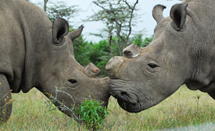
The Best Places to See the Birds of Kenya (Birding Safari Guide)
Andrew Hofmeyr | December 20 2022

The Best Time to Visit Kenya? How to Time Your Kenya Safari
Andrew Hofmeyr | January 28 2023

Come hang out with giraffes at Giraffe Manor in Nairobi, Kenya
Briony Chisholm | January 25 2019

13 Best Things to do in Nairobi, before & after your Kenya Safari
Briony Chisholm | August 03 2018

Private Group?
A private, tailor-made safari is within your reach. Experience all of your bucket-list safari related items on a budget now.

Best shoes in Market for African Safari in Kenya
The reason why am writing about the Best shoes for African Safari in Kenya is in regards to an incident that happened some years back.
You can skip the story to checking the Best shoes for African Safari in Kenya.
Amil is a professional guide in Kenya. He had clients from the UK, who had arrived for a Safari in Kenya.
So, he was excited to receive guests from the Airport then head straight to Masai Mara National Reserve.
Fast forward, they were booked in a camp inside the park, the 2 nd day is usually a full day game drive. So, the following day, (2 nd Day). They left the camp with packed lunch for game drives.
They had the right Safari Attire although one in the crew didn’t have the Best shoes for African Safari in Kenya.
The game drive was doing well until they saw a Lioness but it was a bit far from the track road.
They are not supposed to go off-road but his guests were more than thrilled to see the lioness.
I guess it was the first time, Amil was tempted to break the rules for them. After all, the giggling and ecstatic clients weren`t helping his decision not to go off track.
He obliged and got off track, just as they were about 20 Meters to the lioness. They heard an exasperating sound beneath their Van.
Amil stopped the Car, he had to check where and what just happened to his Van. Remember, the noise has caused the attention of the lioness and she had all ears and attention towards them.
The Lioness Encounter and why you should have the Best shoes for African Safari in Kenya.
Amil was brave enough to chase the lioness, so he had the time to check what just happened. He saw spilling oil, and he just knew he was in for a long day.
The gearbox was out, meaning they could only push the Van, unfortunately, he did not have a radio call and it was in a valley-like depression so the Phone network was poor.
He requested the clients to give him a hand or else they were going to sleep there since it was almost dusk.
Clients Accepted to help him push the Van.
They were two ladies and one gentleman. One of the ladies went on the steering wheel while the two help Amil Push the Van.
Just before they could step out, the lioness reappeared this time with an intended look. Amil once again chased the lioness but this time it was a bit hesitant.
Fast forward, they managed to push while all doors were opened just in case the lioness attacks them, they will swiftly jump in and close the doors.
As the van was getting momentum, the lady who had open shoes (Sandals) not one of the Best shoes for African Safari in Kenya slipped off.
Luckily, she did not trip nor lurch but the Open shoe was left.
This time the lioness was beginning to move towards them. They stopped the van, Amil was guilty and he had to go for the Open shoe that was left as much as the clients told him there was no need and that it was just a shoe no need to risk his life.
In like 10 steps away from the Van, A pride of lions appeared and joined the lioness. All along they were viewing all the drama and the lioness was not alone.
The guide swiftly dashed back to the car and they left the shoe. See all the dangers the wrong shoe can indulge you in?
What if it was a chase? What if the pride appeared when the guide was a bit far from the Van?
This is just an example of what the wrong shoes for African Safari in Kenya can do to you.
Now without much ado, let us delve in and see the best shoes to have for an African Safari.
The Best Women shoes for African Safari in Kenya.
Hi Ladies, out of my experience in the field, I will guide you through to your best Shoes to wear in African Safari.
Here is my suggested list.
Columbia Women’s Newton Ridge .

This is a 5-star rating shoe globally and you can never go wrong with this Columbia Women`s Newton Ridge.
It is genuine leather, waterproof, and has a long-lasting rubber sole. Even if you get chased by a lion in the Jungle.
At least be confident in your motion, the sole is built to pick traction and the shoes as a whole is a lightweight as much as it may look Heavy.
It was made for you in mind, A lady who likes hiking, walking Safaris, is one of the Best shoes for African Safari in Kenya.
Get Columbia Newton Shoes on Amazon Now
Urban Safari Sneaker .

This leopard and tiger-striped, speaks for itself. Am ready for African Safari.
It has a soft manageable suede and a metallic long-lasting mesh.
The light and soft feel rubber sole make it easy for you to walk freely and the sole traction is rightly on point making it ideal for hiking and Safari.
They do not only serve the purpose of Safari but are also stylish and bring in the game drive swag when you rock these Urban Safari Sneakers.
Get Urban Safari Sneaker on Amazon Now.
KEEN Women’s Hiking Boot .

This is one of my favorite brands when it comes to Hiking and Safari Shoes for both Women and Men.
These KEEN Boots are waterproof and light as opposed to their look.
They have a stylish breathable Membrane that will keep your feet, dry even in a hot climate making it one of the Best shoes for African Safari in Kenya.
They also have one of the best tractions, whether in slippery grass, stones, or muddy grounds you can be assured of the traction.
Get KEEN Women Boots on Amazon Now.
Merrell Women’s Moab Hiking Shoe .

A fierce competitor to Keen, Merrel women`s Moab is one of the best hiking shoe sellers.
From Traction to rubber light but long-lasting sole to pure leather shoes that will serve you beyond expectations.
They are known to give the best support for anyone with a flat foot since their arc sole is built to give maximum arc support comfort.
Being one of the Best shoes for African Safari in Kenya, Merrel Moab shoes will take care of your feet even after hiking or walking for long. I couldn’t recommend them any better.
Get Merrel Women Shoes on Amazon Now
Ariat Terrain Boot .

Another Recommendation for both hiking and Safari. Most of the African tour packages have both so it is better to kill two birds with one stone.
These Ariat Terrain Boots are Water Proof and lace adjustable to your liking. They also have a super shock absorber.
They are made of pure genuine leather and they are in for a long haul. Do you have sweaty feet?
They have a moisture-wicking inner lining that will keep your feet dry all day long.
Get Ariat Terrain Boot on Amazon Now.
Sam Edelman Women’s Junip Combat Boot .

Heel height of 1.5 Inches, do you want to dress accordingly but still slay? Are you confident in yourself and want to look trendy?
Sam Edelman Women`s Boot is yours to go for it is one of the best shoes for African Safari in Kenya.
Turn heads whenever, the best thing about this boot is multi-purpose as you can wear it during the rainy season.
They also have a roomy toe area, are lightweight and the sole is synthetic.
Get Sam Edelman on Amazon Now.
Salomon Trail Running Shoe .

Another brand this list couldn’t be complete without. The Salomon XA PRO 3D Trail Running Shoe is simply ideal when it comes to the best shoes for African Safari.
Salomon has been making outdoor shoes, since 1947 and you can never go wrong with this. They have seen and conquered all.
All-weather terrain, they are up for the tusk, running, hiking, or Safari. Your kids’ best brand for outdoor Adventures.
Get Salomon Shoes on Amazon Now.
The Best Men Shoes for African Safari in Kenya.
Hi Gents, out of my experience in the field, I will guide you through to your best Shoes to wear in African Safari.

Reef Men’s Voyage Boot .

These 5 stars rated Reef Men`s Voyage Boot is one of the best shoes for African Safari in Kenya that you will come across.
They have a roomy toe even if you have a wide foot, you will be comfortable all day long.
The boots have a synthetic sole and are one of the best tractions.
The grip of the shoes is insurmountable making them ideal for hiking, desert walk and Safari walks.
Get Reef Men`s Voyage on Amazon Now.
Mammut Men Alnasca II Low .

They have a rubber sole, I like shoes with rubber soles they never disappoint.
The Mammut Men Alnasca has 3D Double knitted mesh and gives a wide room for breathable feet making your foot dry.
Their traction is also on point, they can be worn on regular basis, meaning while on Safari.
You still rock the shoes in your city tour or social places.
Get Mammut on Amazon Now.
Salomon Men’s Hiking Shoes .

As I mentioned earlier, Salomon is a self-established brand since 1947 when it comes to outdoor footwear.
It needs little or no introduction.
The shoe is waterproof and has a wicking lining to smoke out any sweat in your feet, making you arrive at your next destination with happy feet.
Get Salomon on Amazon Now
Kenetrack Non-insulated Hiking Boot .

Probably the most expensive shoe in my list of Best shoes for African Safari in Kenya.
It is referred to as the perfect shoe for African Safari.
Pure thick leather, Rubber Sole, Shock Absorbers, and the best arc sole you will ever find in a shoe.
Ideal also for desert Safaris, Hiking since its rubber soles have one of the most reliable traction.
Get Kenetrack Boots on Amazon
Merrell Men’s Moab .

one of the best hiking best-selling shoes. From Traction to rubber light but long-lasting sole to pure leather shoes that will serve you beyond expectations.
They are known to give the best support for anyone with a flat foot since their arc sole is built to give maximum arc support.
Being one of the Best shoes for African Safari in Kenya, Merrel Moab shoes will take care of your feet even after hiking or walking for long.
Get Merrel on Amazon Now.
KEEN Men’s Hiking Boot .

As mentioned earlier this is one of my favorite brands when it comes to Hiking and Safari Shoes for both Women and Men.
Get KEEN Boot on Amazon Now.
Thanks for the read and share.
Disclaimer: As an Amazon Associate, I will earn a small commission for every successful purchase at no extra cost to you. Thanks for supporting this Blog.
- How Much does a Kenyan Safari Cost?
- 7 Secrets on how to plan a budget Safari to Masai Mara Kenya .
- The Utmost guide for Packing for Kenya Safari.

Where is the Maasai Market Location in Nairobi?
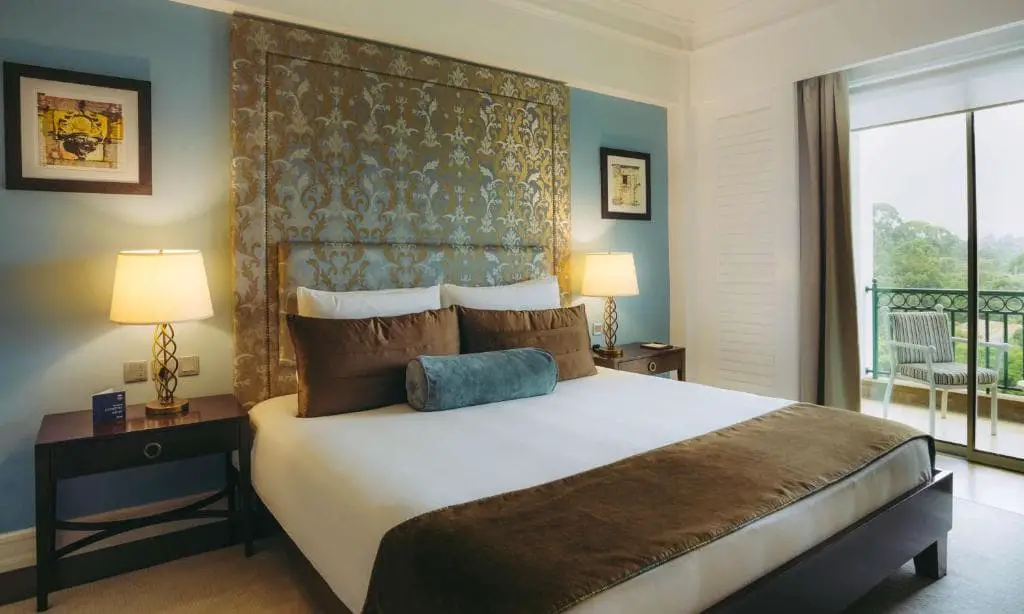
14 Hotels in Nairobi Westlands rating from luxury to Budget

13 Budget Hotels in Nairobi CBD for only $50 B&B
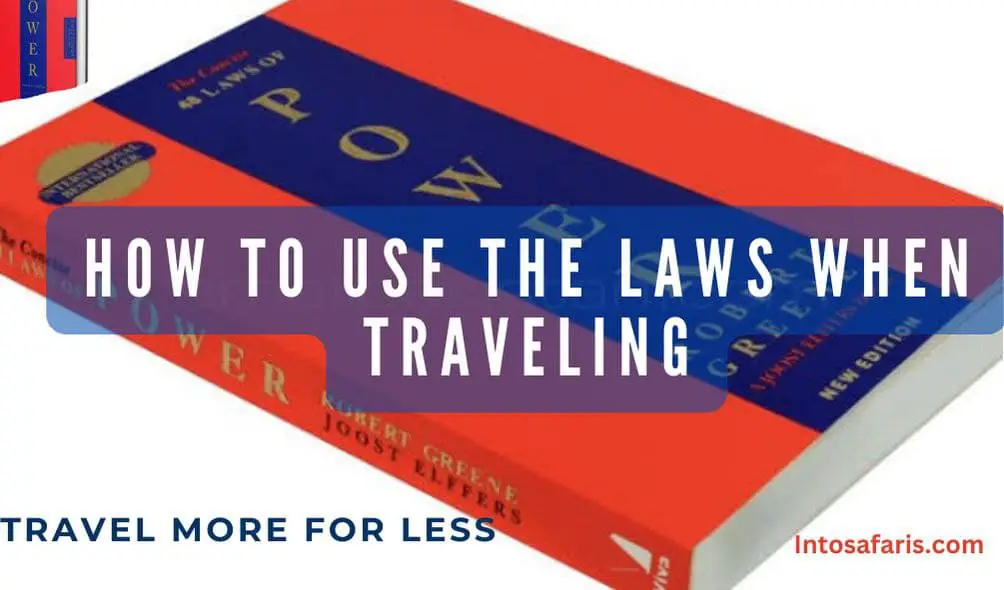
How to use 48 Laws of Power when Travelling
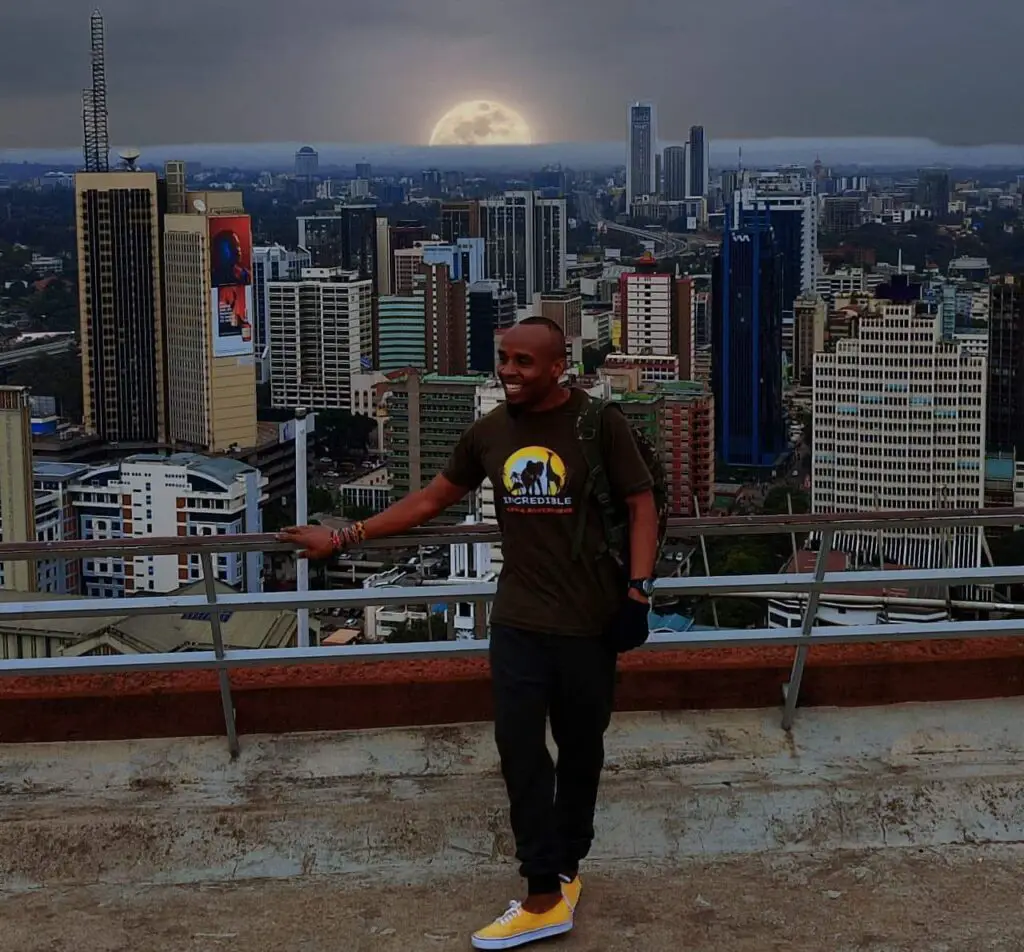
Nairobi City walk Tour with a certified Expert
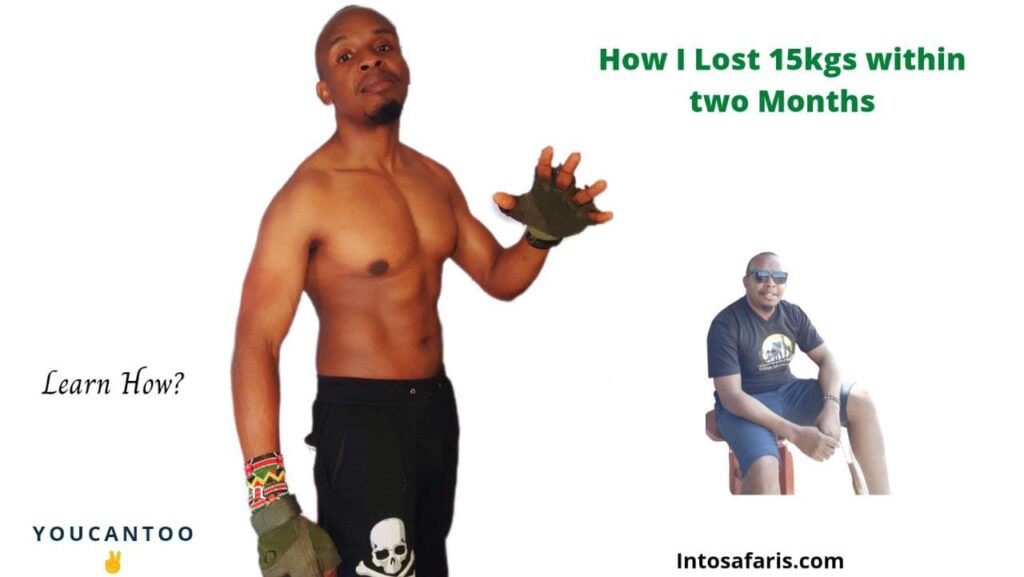
How to lose weight fast naturally and permanently

13 Epic Picnic sites in Nairobi you should visit
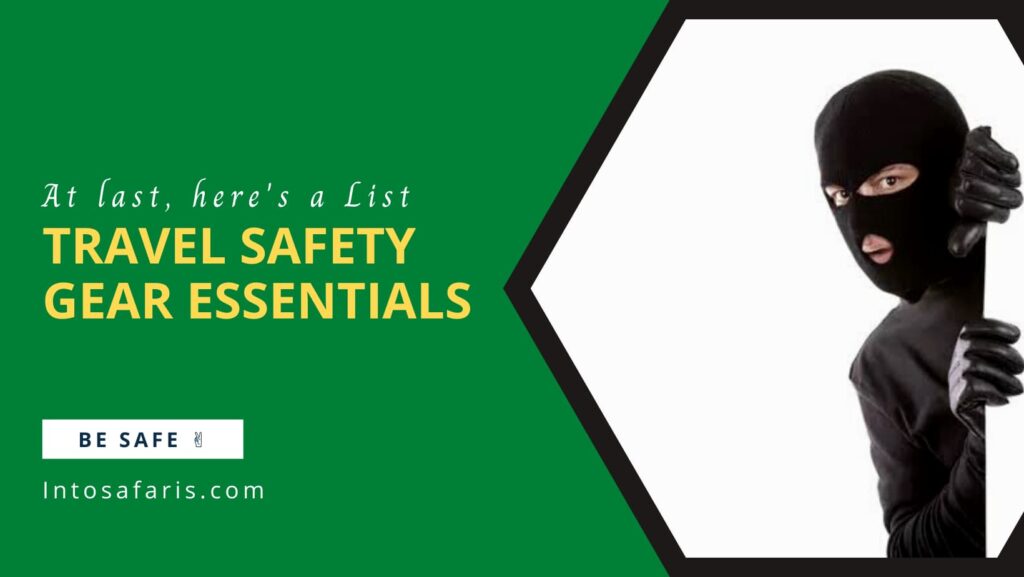
Travel safety gear Essentials that you need
Leave a comment cancel reply.
Your email address will not be published. Required fields are marked *
Save my name, email, and website in this browser for the next time I comment.
- Work With Me

- Sierra Leone
- South Africa
- United States
- New Zealand
- Falkland Islands
- Netherlands
- Accommodation
- Electrical Gear
- Essential Gear
- Working Abroad
- Blogging Resources
Africa , Travel Gear & Packing
The best shoes for your african safari.
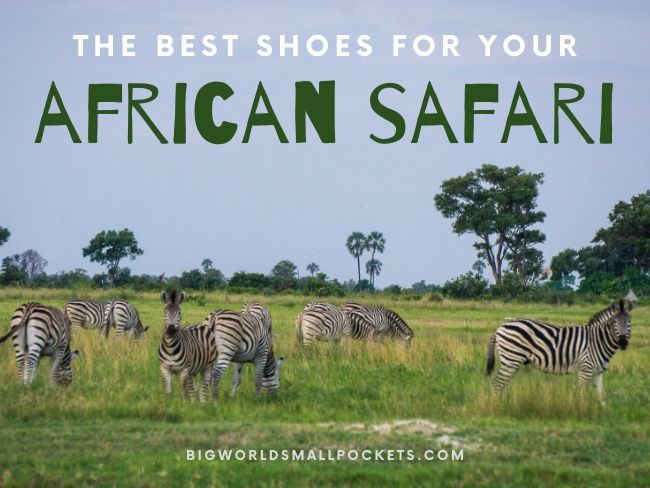
When we talk about African safaris, we often forget that we’re generalising about a huge range of activities which stretch across a massive swath of this continent!
From walking through the wild jungle to sitting in a luxury 4wd – and everything in between – there’s a ton of different safaris and a ton of different best footwear to choose as a result.
And that’s why I’m bringing you this full guide, to help you pick the best safari shoes for your specific trip, to clear up any confusion or questions you may have, and also to suggest some pairs I think best fit the job too!
Yup from practical features you need to consider to top pairs for women, I’ve got you fully covered, so let’s get cracking…
Related Posts
- Ultimate Safari Gear List
- The Best Camera for Safari
- How Much Does An African Safari Cost?
This page contains affiliate links meaning Big World Small Pockets may receive a small commission on any purchases at no extra cost to you.
Grab Your Copy of How to Travel Africa for Less
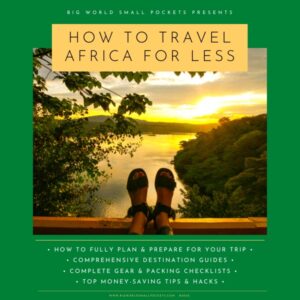
- Full Planning & Preparation Guides
- Detailed Destination Info
- Complete Packing & Gear Lists
- Top Money-Saving Tips & Hacks
Click Here to Check It Out!
The best shoes for your specific safari.
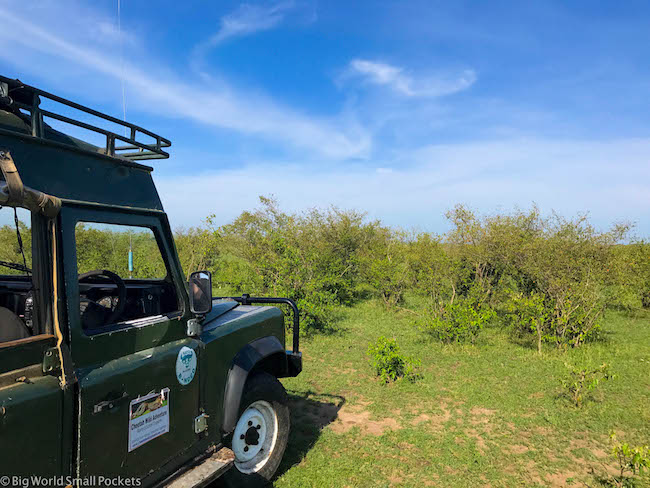
How Long Is Your Trip?
When it comes to picking the best safari shoes, we need to remember what’s right for one person and their trip isn’t right for everyone.
That’s why I want to kick off this article, by getting you to think about your specific trip and what shoes might best suit your needs.
To start with, you need to think about where, when and how long you’re planning to safari for.
If you’re simply visiting one country in Africa on a short 1 week trip, then you may be able to take a couple of pairs of different shoes because you won’t be limited by weight in the same way as if you’re undertaking a long overland trip through many countries in Africa, likely living out of a backpack you have to carry.
On a short trip therefore, where you’re likely to have a suitcase you can wheel around, taking a few pairs of shoes might not be such a problem.
If you’ve got a heavy backpack to carry, you might limit yourself to just one!
Where and When Are You Going on Safari?
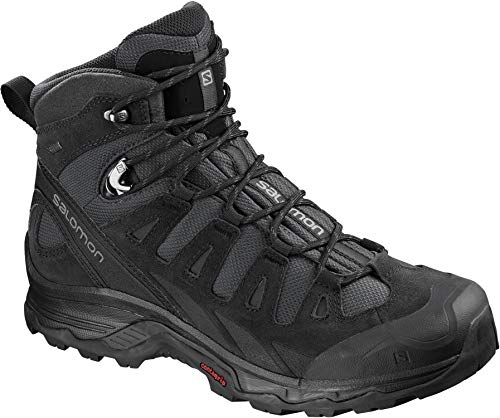
Next, we need to consider where and when you’re going to safari i.e. in which country and at what time of year.
This will drastically affect what the best shoes for your safari are, because you may need something waterproof if travelling in the rainy season, something well insulated if it’s likely to be cold, or something breathable if you’re travelling in the height of summer.
For example, the jungles of East Africa (if you’re heading to see the gorillas ) have very damp, humid conditions then certainly require boots that are waterproof and have good grip.
Compare this is to travelling to Etosha National Park in Namibia in the height of summer, where the dry, desert-like conditions here and searing heat, mean keeping your feet cool will be of greatest importance.
What Type of Safari Are You Taking?
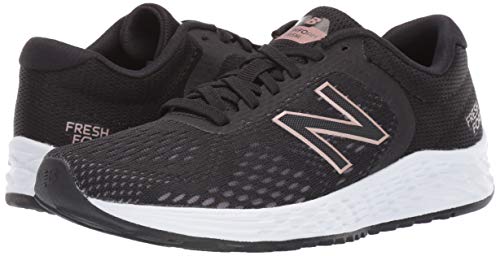
The third thing to think about when considering what the best shoes for your African safari might be is the type of safari you’ll be enjoying.
Full driving safaris, which are common in parks such as the Serengeti in Tanzania or the Masai Mara in Kenya , where dangerous predators mean you can’t exit a vehicle, will necessitate very different footwear to if you’re enjoying a walking safari with rhinos in eSwatini (formerly Swaziland) or Zimbabwe, where physical trekking on uneven ground will mean good, study boots are very important.
Ditto, a luxury safari where vehicles are a bit more comfortable means you may want to take shoes that are lighter than a rough, budget 4wd safari vehicle, where sturdy shoes that prevent your feet from knocks and bumps might be a better idea.
If you’re staying in a lodge, a more relaxed sandal will be more appropriate than if you’re wild camping and need some protection for those toilet trips in the night!
When it comes to the best safari shoes for you therefore, a little time to think about what type of trip you are likely to undertake, where, when and how long for, will certainly help you prepare the best footwear.
And if you’re looking for ideas about the best safari experience, why not check out this great range of options that cover some of the top wildlife attractions and national parks across the continent.
4 Safari-Specific Shoe Suggestions
And to get you thinking a little more, here’s 4 suggestions to help you narrow down your research…
#1 For gorilla trekking in Uganda, these waterproof and sturdy Salomon Quest Gore-Tex boots have excellent grip, tread and high ankle support to cope with the rough jungle conditions underfoot, as well as keep your feet well protected from any nasty creatures!
#2 For safaris in desert countries like Namibia, where it’s very hot and dry and you’re largely staying instead a vehicle due to the risk of predators, then a good supported and sturdy sandal, will probably be best for keeping your feet cool yet comfortable, making these Arizona Birkenstocks ideal for the job.
#3 For walking safaris in hot Southern African countries like Swaziland or Zimbabwe, something inbetween a big clumpy boot and a sandal will be best. I highly suggest a walking shoe if this is something that’s likely to feature on your itinerary, because not only do they have good grip and support with a thick sole, but they also keep your foot well-ventilated and are flexible, low-rise and light for any quick movements you may have to make. These North Face Hedgehog Fastpack GTX are a good option because they are waterproof too – handy if there’s a heavy dew in the morning!
#4 And finally, for safaris in humid countries such as Kenya and Tanzania in East Africa, something light, comfy and airy, but that will protect your feet from knocks and bumps in a 4wd vehicle, will be best. In this case, a trail runner shoe, like these New Balance Fresh Foams would be perfect.
Just enter your details below and I'll email it you - simple!
Information will be sent to the email provided above
Practical Points to Think About For Your Safari Shoes
Safari shoe colour.
One thing I know a lot of people think about when it comes to the best shoes for their African safari is colour… because I get a lot of questions about this!
And while colour doesn’t matter a huge amount, I always suggest a natural shade like black, grey, brown, navy or dark green are best.
There are a few reasons for this, although none have very much to do with the wildlife, given most safari animals only see in black and white.
Instead, natural colours make for the best safari shoes in my opinion, simply because a) they match with most other clothing colours well, which makes packing a lot easier and b) they show up the dirt less, which makes cleaning them (or not) a lot easier!
I also personally think natural colours look a lot more stylish than say, a bright pink pair, but this is a cosmetic point, rather than anything practical and certainly down to personal choice.
Waterproofing
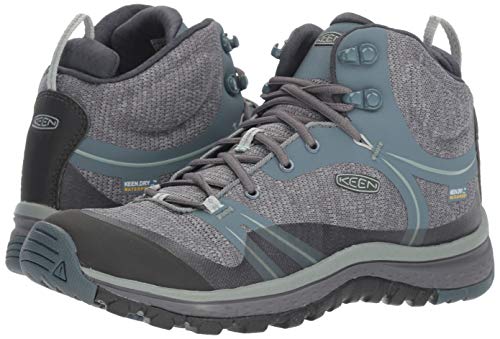
We’ve touched on this already, but if you’re travelling anywhere in Africa during the rainy season, waterproof safari shoes are a must.
Even outside of rainy season, humid conditions in East Africa make waterproof boots necessary in my opinion.
Equally, heavy morning dews, which are not uncommon in Southern Africa, make a safari shoe made from Gore-Tex a good option here too.
Temperature
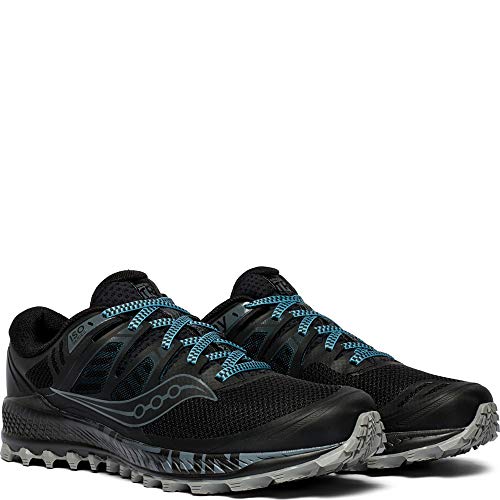
Safari shoes that keep your feet cool through good ventilation, will definitely make your safari a more enjoyable experience, especially if you’re travelling in the summer season in Southern Africa, for example, where the temperatures can be scorching between the months of December and February.
However, travelling here in the winter months (June to August) can be very cold and in this case, a warm, well-insulated boot would be best.
As travellers, we always need to consider weight when packing and selecting something lightweight as your safari shoe of choice is a great option.
Not only will this keep luggage weight down, but having a big, clumpy boot on your foot when you’re clambering in and out of safari vehicles, trying to set up camp or going trekking is never fun.
Of course, you have to balance this against protection, but do remember that as light as possible is a good motto to stick to in my book.
And so we get to protection.
A good sole is very important on any safari shoe in order to help support the arch of your foot and protect it from knocks and bumps.
Ankle support can range from a low-rise trainer, runner or walking shoe, to a full height hiking boot, so whatever you choose, just make sure they fit snuggly around the ankle to offer it support.
When it comes to protection, a mid-length hiking boot can be a good option here, balancing the best of both worlds in terms of protection and weight.
Flexibility
Again, it’s about a trade-off when it comes to protection vs flexibility in a safari shoe, but generally, I would lean towards something lighter and more flexible than something heavy and stiffer.
This is the problem with very sturdy leather hiking boots in my opinion, they are just too heavy and too stiff.
A light, mid-length hiking boot, made from breathable Gore-Tex, or a sturdy trail running shoe with good support and a thick sole, would make much better options if you ask me.
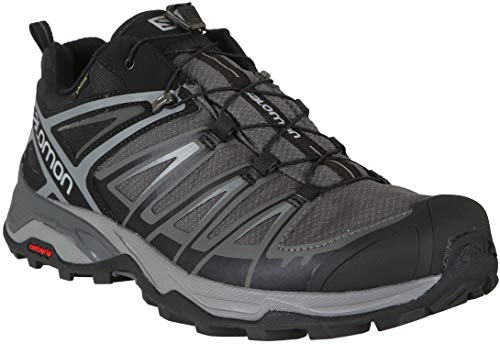
But one feature where you shouldn’t compromise, is grip.
This is key in any safari shoe you choose and whether it’s a good sandal, a light runner or a sturdy hiking boot, good grip is a must.
5 Top Safari Shoes Based on Practical Features
#1 For a lovely natural coloured shoe that goes with most things and won’t show up the dirt easily, these Salomon X Ultra 3 GTX walking shoes are perfect.
#2 For waterproofing points, I really do think these Keen Terradora waterproof hiking boots are hard to beat. They are mid-length too, which means good ankle support, but less weight.
#3 When it comes to temperature, if you need something that will keep your feet warm, but that is also breathable, these Saucony Peregrine trail runners are superb and also offer excellent grip and good protection.
#4 If a lightweight safari shoe is crucial to you, then maybe stick to a simple runner or trainer as your footwear of choice. These New Balance 880v9 GTX are waterproof and weigh less than 300 grams! Good protection and durability too.
#5 And in terms of flexibility, it’s hard to look past the Asics Metarun , which have a Gel technology that not only makes them super responsive, but also 55% lighter than your standard pair of runners.
DON’T HEAD OUT ON SAFARI WITHOUT THESE OTHER 5 ESSENTIALS
#1 Binoculars – They don’t’ need to be expensive, but my cheap Eurohike pair were a great investment.
#2 Toilet Paper – Bush toilets don’t generally provide it!
#3 Natural Sunscreen & Sun Hat – Things get hot on safari so do be prepared.
#4 Good Camera & Lens – An absolute must if you’re looking to capture the incredible landscape and wildlife. I love my mirrorless Sony A6000 , which is light, compact and robust – ideal for Africa travel.
#5 Sarong – Whether it’s covering your shoulders from the sun, using as a pillow on long bus journeys or protecting yourself from dust on safari, a sarong is a great multi-purpose travel item for Africa.
Best Women’s Shoes for an African Safari
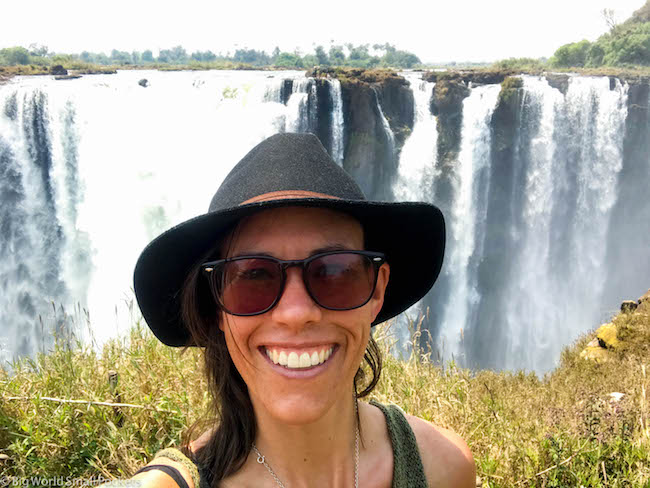
I’m putting in this section about the best women’s shoes for an African safari quite simply because many women email me with this question, so ladies I’m dedicating this part to you!
We’ve touched on the colour issue above, but to reiterate, I highly suggest keeping it stylish and coordinated with natural colour footwear that is grey or black.
I’d also see if you can extend your shoe allowance to 2 pairs – both a good mid-length hiking boot / decent walking shoe and a pair of excellent, support sandals will come in very handy.
This should allow you to cover most bases in terms of walking / vehicle safaris and chilling at a lodge / camping, as well as across both South and East Africa if you’re on a long trip.
Remember your feet will swell in the heat and you might be using your hiking boot with a thick sock, so factor these elements in too when trying on your safari shoe.
Speaking from my own experience as a female traveller, I wore my Birkenstock sandals during almost all my safaris in Southern Africa because it was so hot.
However, in East Africa, I wore nothing but by brown Doc Martens due to the wet and muddy conditions.
Note these weren’t ideal, but I was on a huge overland trip from Cairo to Cape Town at the time, so these were the type of boots that covered all bases – fashion and practical – for such a diverse adventure.
3 Best Safari Shoes for Women
#1 I know I keep banging on about them, but it’s just so hard to beat a good pair of Arizona Birkenstocks if you’re looking for the perfect safari sandal ladies.
#2 For a good walking shoe, I just think North Face Litewave are a lovely light and stylish option for women.
#3 And for boots, Merell Siren are light, mid-length, waterproof and about as pretty as a hiking boot can get!
3 Best Overall Pairs of Safari Shoes
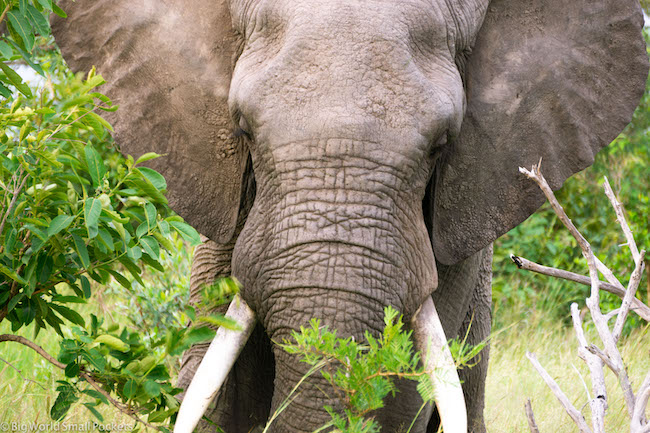
With this information in mind therefore, you can see that it’s actually impossible to nail down just 1 pair of shoes that are the best shoes for an African safari.
It’s a bit like saying, what are the best shoes for your Europe?
Well, it depends on where you’re going, when and what you’ll be doing there.
Same applies to safari shoes, but based on my experiences in Southern, East, Northern and the Horn of Africa, I’ve come up with 3 great pairs that between them cover all eventualities.
Read on to discover what my overall 3 best shoes for an Africa safari are…. and why!
And, don’t forget, if you’re struggling to decide where to safari (it’s confusing I know!) then check out these top safari tour picks for some seriously super inspiration!
#1 Teva Women’s Tirra Sandal
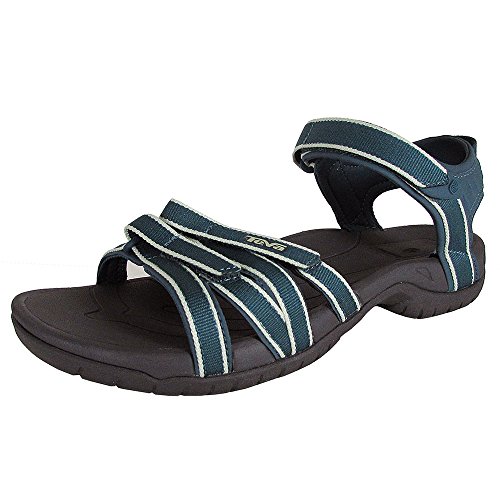
What I like most about these sandals compared to other women’s activewear sandals is their graceful appearance, with thin straps, which are perfect for long, thin feet like mine!
As one of the original activewear sandal brands Teva are experts in their field and these Tirra models are waterproof with a strong, secure strapping configuration that offers multiple adjustments to ensure a perfect fit.
In addition to this, the shoc pad technology offers superb comfort, with a durable footbed giving super support and spider rubbles soles providing some great grip.
Ideal for Southern Africa in particular, the great ventilation of these shoes is just what you want for the dry, hot conditions in this part of the continent in peak safari season.
Light, quick and easy to slip on and off, these sandals will take up little room in your luggage.
Available in a huge range of colours, the comfortable and supporting Teva’s Women Tirra Sandals would be an excellent choice as one of the best shoes for African safari experiences.
#2 Saucony Women’s Grid Excursion TR9 Trail Running Shoe
Good for walking or cycling safaris like Hells Gate National Park in Kenya or Matapos National Park in Zimbabwe , a pair of trail running shoes are the 2 nd pair on my list of the best for shoes for an African safari.
With tons of great brand to choose, I really love this pair of Saucony Women’s Grid Excursion TR9 Trail Running Shoes , which are great for all sorts of outdoor adventure, including safaris!
Light and durable, these top safari shoes won’t take up much room or weight in your bag.
They can also double as city footwear, perfect for the more urban areas of Africa or travel days, especially given their breathable mesh panels and excellent ventilation.
In addition to keeping your foot cool when on safari, the mesh panel’s of the Saucony Women’s Grid Excursion TR9 Trail Running Shoe are also great for keeping dust and dirt out – an excellent feature in the Africa environment!
The smart cushioning system and rubber outsole also ensure excellent grip and traction.
Perfect for safaris across Africa, these Saucony Women’s Grid Excursion TR9 Trail Running Shoes would work during dawn and night safaris, when the cold weather means you’ll need something that completely covers your foot, but isn’t overly bulky or cumbersome.
#3 KEEN Women’s Targhee II Mid WP Hiking Boot
When it comes to safari hiking boots, the Keen’s Women’s Targhee II Mid WP Hiking Boot offers unparalleled comfort and durability with excellent value for money.
Breathable, with a protective toe cap and excellent traction, these are definitely one of the best for shoes for African safari trips, such as gorilla trekking in East Africa where the ground is muddy, wet and unstable.
With an outstanding waterproof rating, the KEEN Women’s Targhee II Mid WP Hiking Boot would actually be the perfect pair of shoes for safaris across East Africa, where it can rain at any time of year and where conditions can quickly become slippery.
In the dense jungle areas of Africa, fire-ants are an additional threat, so having a hiking boot, rather than a lower supporting shoe here, is going to help you combat these pesky insects too.
As hiking boots go, I love the look of the KEEN Women’s Targhee II Mid WP Hiking Boot , which is pretty stylish as well as practical.
The brown, ‘shitake’ colour scheme they offer are almost fashionable!
You can even wear these on travel days without feeling like the total tourist hiker too!
As well as in East Africa, these are also one of the best shoes for African safari adventures if you are travelling in Southern Africa in the winter (when its freezing and you’ll likely need a boot!) as well as further north in the Horn of Africa.
For example, I wore hiking boots a lot in Ethiopia, in particular when trekking in Simien Mountains National Park and in the Danakil Depression.
PIN IT FOR LATER!
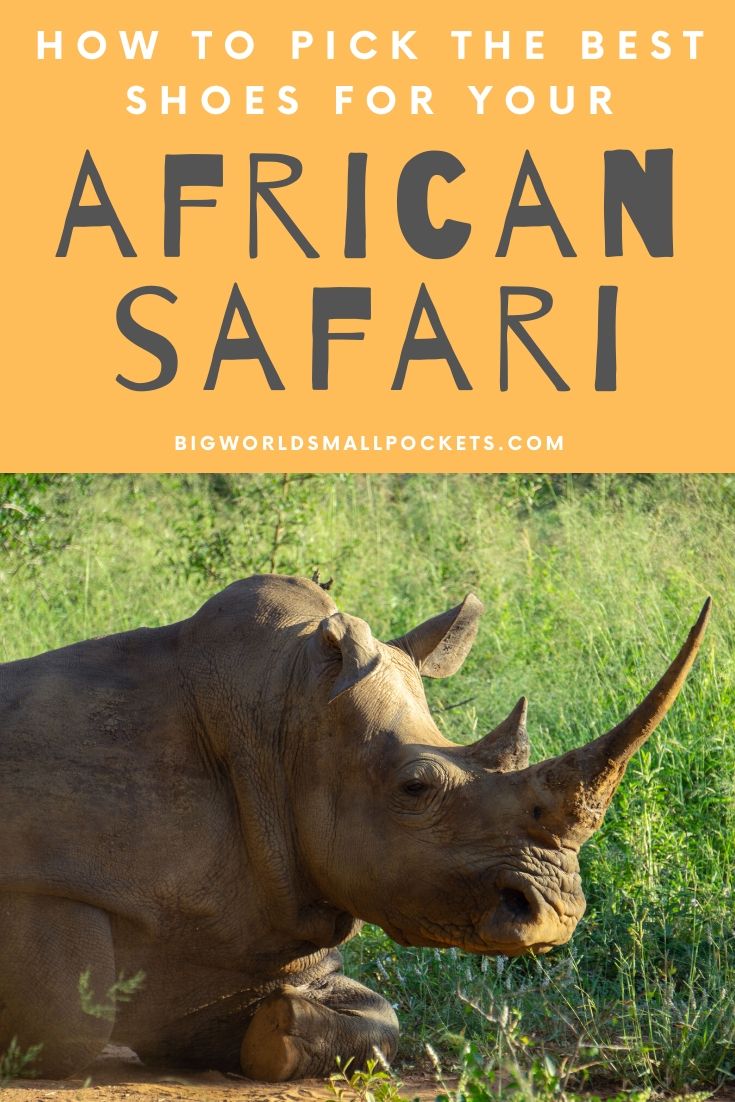
So there you have it, my top 3 pairs when it comes to the best shoes for African safari trips.
Have you been on safari in this amazing continent?
What shoes did you take?
Please join the discussion by adding any thoughts or questions into the comments box below…
Creator of Big World Small Pockets, Stephanie Parker is a travel addict! Originally from Jersey in the Channel Islands, Stephanie adventures the world collecting tips, advice and stories, to share with a smile
Leave a Reply Cancel reply
Your email address will not be published. Required fields are marked *
This site uses Akismet to reduce spam. Learn how your comment data is processed .

What to Wear on Safari in Kenya | An Essentials Packing List
You’ve watched Lion King as a kid and your favorite party trick is impersonating Sir David Attenborough because you watch a lot of National Geographic. But, are you ready for a Kenyan safari?
Kenya is more than just a safari game drive. This country offers a vast array of experiences, from wildlife-filled savannas to dancing alongside the people of the Masai tribe. So, it’s understandable that you may be a little stressed about what to pack for this trip.
In this guide, we’ve put together a safari packing list that will help you be prepared and feel comfortable. We’ll make packing for safari less of a logistical nightmare and more like a sunset ending from your wildest dreams.
What to Wear on Safari
As a general rule of thumb, it is imperative to bring comfortable and casual clothing that you can wash and wear while on safari. Good safari clothes should protect you from the sun, the dusty fields, and the bitter cold of the mornings and evenings.
Your Kenya safari clothing must have muted colors, as this is best for game viewing. If you plan to stay inside of your camp or resort, focus on the light-colored fabrics so as not to attract mosquitoes.
Your Kenya Packing List

Pack light
Once you land in Kenya, getting into the wilderness generally requires transit via a jet plane. The weight restrictions are to be taken seriously. On safari, your limit is a 15kg bag (33 lbs), and that includes both your checked bag and your hand luggage. The ideal checked bag is a soft-sided duffel that can fit into the luggage hold of the plane and can be transported in open safari vehicles on the ground.
Long-sleeved Shirts
Long-sleeved shirts are the best items to wear on safari. They should be light and airy so that they can protect you from the sun but are also easy to layer when the sun begins to set.
T-shirts are great on safari to protect your shoulders from the rays of the sun. A great t-shirt option to consider is a button-down that is made from breathable material. Try microfiber or linen.

Convertible Trousers
In the early mornings out in the wilderness, it can be quite cold. However, as the sun rises it will start to heat up. That’s why convertible trousers are best. These keep you warm in the mornings and allow you the flexibility to ‘change’ speedily while you are out exploring.
Jackets and Sweaters
It might shock a few people but it does get cold in Kenya , in the evenings and early mornings at least. If you were stumped on what to pack for safari, a light jacket and sweaters are essentials you shouldn’t leave at home.
Sunglasses
Protect your eyes with a pair of UV protected polarized sunglasses. A good idea is to take two pairs, in case one of them breaks. Polarized sunglasses reduce bright reflection and unwanted glare from looking at a lake, for instance, where the sunshine tends to bounce off. Polarized lenses also help improve vision clarity in bright situations.
Wide-brim Hat
Even though you spend most of the safari in the vehicle, the sun is powerful enough to shoot through the roof and shine directly on you. A wide-brim hat is perfect to protect you from the sun and to cover your neck in order to prevent sun damage to your skin. It’s also a necessity for any walking safaris you partake in.

Sunscreen
This should already be in your arsenal at home but it is definitely a safari essential – especially on the savanna . It is also important to note that the roofs of the safari jeeps are open, there is no shade to protect you from the sun, so be protected.
We recommend that you purchase a sunscreen that has a high enough SPF that can target both face and body. But, be sure it is only 100ml, if not checked in.
Comfortable Walking Shoes
Trainers or hiking boots are the perfect safari shoes for Kenya. But if you want to let your feet breathe on a hot African day, you can also bring sport sandals along. The best are the ones with a supportive sole. These can be useful for bushwalks.
Mosquito Repellent
Kenya is a Malaria zone, so it is very important to prevent mosquito bites. Mosquito biting is dependent on where you stay, the time of year and the weather. But of course, it is better to be safe than sorry. A good idea is to bring along an insect treatment for gear and clothing as well. You can spray it on your shoes or around the ankles, hands or neck to protect them from bites.

Binoculars and Camera Equipment
It would be remiss not to add a camera or binoculars on your safari gear list. We all want to have beautiful photos that will keep our memories alive. A packing list for African safari would be incomplete without them. In the safari vehicle , there isn’t a lot of space to get the perfect angles, especially if you are sharing with other people.
Cameras with zoom lenses are a necessity because even though you get pretty close to the animals, there are still several meters between you and them. Binoculars are equally important for spotting events like the Great Migration or when you’re in a hot air balloon and you’re dying to get a little closer to the action.
Final Thoughts on What to Wear in Kenya
A safari is definitely a grand adventure. But dressing for this adventure requires a good bit of thought and practicality. Hopefully, when you go on your wildlife safari, you’ll not only look good but feel great and protected from the elements. Follow these rules and you’ll be a certified Dora the Explorer .

Best Time for Safari in Kenya | Top Months, Seasons & Weather

Amboseli National Park Kenya | A Total Guide
Tags: Safari

Top Animals in Amboseli National Park | Mammals, Birds & More

Top Animals in Masai Mara National Reserve | Mammals & More

Kenya Vacation | What to Know Before Booking a Safari

Leave a reply Cancel reply
Save my name, email, and website in this browser for the next time I comment.

Compare items
- Total ( 0 )
Shopping cart

What to Wear in Kenya Safari Destinations? (12 + Essential Items)
If you have never been on safari before, it can be difficult to know what clothes to wear on safari in Kenya. I experienced the same difficulties while packing for Kenya in October 2022.
I was apprehensive about packing the right items, packing too much, or not packing enough. Plus, I could not find examples of the best type of clothing for safari in Kenya.
This article will teach you exactly what to wear in Kenya safari destinations. In addition you will learn what to wear on safari in Masai Mara, how to dress in Nairobi, and the best shoes for safari in Kenya.

While this packing article works as part of a travel guide for Kenya , you can also apply most of the contents of this article to other safari destinations, such as Tanzania and South Africa.
If you require further information, you can read this article on what to pack for a Kenyan Safari , which talks about luggage, toiletries, travel documents, first aid supplies, and more.
What is a Day Like on Safari?

Before deciding what to take on safari in Kenya, ensure you know the details of your itinerary and understand how a day on safari works.
You will most likely spend several hours each day inside your safari vehicle unless you have planned any walking safaris or evening cultural activities.
Read the following article to learn about how you will spend your days on safari in Kenya and learn more about visits to Nairobi National Park here.
Weather for Kenya Safari
The weather forecast for your safari in Kenya can change drastically based on the location of your lodges and the time of year you are travelling.
The seasons in Kenya are either a rainy season or a dry season. June to October are generally warm and dry months. Whereas March to May and November to December are the wet periods of the year.

Knowing what to pack for Masai Mara safaris can be challenging, but you should consider the weather for your specific travel period to assist you.
The climate is cooler in Masai Mara from June to August. Therefore, you will need warmer layers for the mornings and evenings.
Plus, the day temperature will be lower than at other times of the year. So, you should consider bringing more long-sleeved options than short-sleeved ones.
For those travelling in September and October, it will be warmer than the other dry months. Therefore, remember to bring your swimwear for an outdoor mid-day dip. Plus, pack some short-sleeved options or light materials, such as linen.
To give more detail, the early morning and night temperatures during the cooler months in Masai Mara could be around 10 degrees Celsius.
You can still wear short-sleeve pyjamas at night because the blankets and hot water bottle will keep you warm. If you are easily cold or you are used to sleeping in long-sleeve pyjamas, you could bring a longer layer for your legs.
You will want to wear a warm layer, such as a sweatshirt, on top of your regular safari day clothes in the first few hours of the game drive. Plus, a jacket would be handy. Or, if your safari lodge provides a fleece or blanket, I suggest you wear that.
The day can later reach over 20 degrees Celsius, so you need to be able to take a few layers off to be a comfortable temperature in the sun.

If you are travelling to Samburu National Park during your safari in Kenya, you will require some different clothing options.
While Samburu typically has a wet and dry season, Samburu is currently in a severe drought (2022), and it has not rained in two years. (Update 2023: it is no longer in a drought).
In the middle of the day, Samburu will become scorching hot.
When I visited in October, it would easily reach 33 degrees Celsius at the hottest part of the day.
However, it was slightly chilly in the morning. Therefore, layering is essential.
What to Wear on Safari in Kenya?
The dress code for safari is casual. Even if you have booked a luxury safari, you should aim to dress comfortably and in the correct colours (explained below).
Opt for the right kind of material; lightweight, and dress in layers, and then you will be suitably dressed. The day generally starts cooler and ends up warm by the middle of the day.
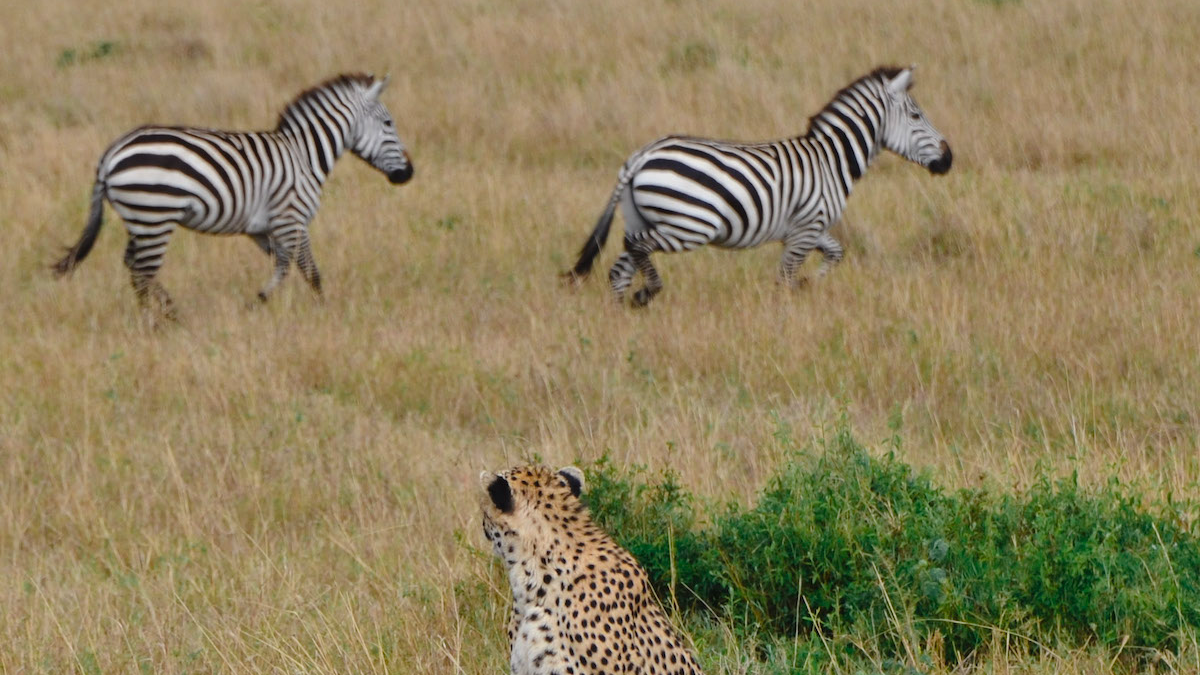
FREE Safari Packing List
Sign up to receive your free checklist to prepare you for your Safari in Kenya.
Check your email to find your free packing list. It should arrive within 10 minutes.
Safari Colours

Your safari wardrobe should consist of khaki, green, brown, beige, or grey. This colour pallet will help you blend into the savannah and observe the animals without being noticed.
Do not bring bright coloured shirts on safari, for example, no red, blue, or orange. These colours are distracting for the animals.
While on a Masai Mara safari you will most likely come across lions and feel a little timid; therefore, you will feel more comfortable wearing a subtle colour pallet.
You are not allowed to wear camouflage in Africa because it is illegal in Kenya and other African countries.
It may be tempting to bring some white clothes to pair nicely with your green or beige outfits, but it is best to avoid white items. Not only will they show dust and dirt more easily. But also, animals find it easy to spot white because their eyes see in black and white.
Lastly, black and navy are some of the colours not to wear in Kenya on safari because these tones attract nasty biting tsetse flies. However, I did not experience the tsetse flies in Samburu or Masai Mara in October.
Some travellers are unaware of wearing safari colours, or they choose to ignore this advice. However, it is best to wear the suggested colours to watch the animals enjoyably from a distance without startling them.
Nonetheless, you do not need to go out and buy a whole new wardrobe until you have rummaged through your options at home. You may be surprised to see what neutral colours you already own.
African Safari Clothes

The best kind of safari outfit to pack in your suitcase is one that can be mixed and matched. You should bring several t-shirts and bottoms that are short-sleeved and long-sleeved that you can combine to make different outfits.
A bush hat is one of the most important things to take on safari in Kenya. Again, make sure it is a neutral colour. Wide-brimmed hats with a necktie are great options, such as this sun hat from Fjallraven .
Baseball caps are fine, but make sure it fits well because you do not want the hat to fly off when the vehicle picks up speed.
A neutral jacket will complete your safari outfit. It is good to wear first thing in the morning and for your evening sundowner drinks. You can leave it in your safari vehicle when you are not wearing it.
What Shoes to Wear on Safari in Kenya?

People say that the best shoes for safari in Kenya are lace-up boots. While they are good options, especially if you are doing a walking safari, if you do not own this type of shoe, you will also be fine wearing a pair of trainers/sneakers .
Since you will be sitting in your safari vehicle most of the day, the main requirement is comfortable closed-toed footwear.
You will get out of the vehicle for your bush breakfast, where it may be dusty on the floor, so do not bring your favourite shoes. Ideally, the trainers should be easily washed or wiped.
If your trainers are mesh on top, the dust and dirt will seep through and discolour your socks. Also, avoid bringing shoes that are suede.
Make sure your shoes have a thick sole to prevent any thorns from piercing through your shoes into your foot. One of my group members experienced a thorn in the shoe and it was painful.
Other Shoes to Wear in Kenya Safari
- Flip-flops or sandals – it is worth bringing a separate pair of shoes to wear around camp during the day. If it is warm your feet will want a breather from wearing socks.
- Closed-toed shoes for dinner – you may want to wear a separate, fresher pair of trainers in the evening to dinner after you have showered from your afternoon game drive. It is best to keep your feet covered because there is more chance of getting bitten by insects at night.
- Waterproof shoes – walking boots are unnecessary unless you are travelling in the rainy season or you will be doing extensive walking safari activities. Wellington boots may be available at your camp.
Remember when packing your bags not to bring plastic bags to Kenya as they are illegal. Purchase some reusable shoe bags for footwear instead.
I brought a pair of strappy sandals but wore trainers the whole trip because I did not want to get mosquito bites on my feet.
Suggested Footwear for Safari
- Converse All-Stars – these are the shoes that I brought on safari to Kenya, and they worked well.
- Reebok C 85 Vintage – these are another option for comfortable and easily cleaned shoes (I also own these shoes)
- Brown Leather Lace-up Boots
- Brown Boots from Birkenstock
- Havaianas Flip Flops – women’s flip-flops or men’s flip-flips
- Birkenstock Arizona EVA Slides (waterproof)
Safari Clothes for Women

Ladies – do not be tempted to bring a dress or skirt on safari. You will need to clamber, rather indelicately, in and out of a safari vehicle. It will be more practical to wear trousers or shorts to cover your modesty.
Ideally, avoid one-piece items of clothing, such as jumpsuits, for game drives because if you need to use a bush toilet (a literal bush in the savannah), you want to be able to go as discretely and quickly as possible.
Most safari lodges offer laundry services. The housekeeping team will wash a couple of items per person per day. Some lodges wash these items by hand, whereas others machine-wash the clothes. Most lodges will line dry clothes.
Due to cultural reasons, the lodge will not wash women’s underwear, so bring enough for the whole trip. Alternatively, pack some powder detergent or ask your safari lodge if they have any to wash your delicate items in your bathroom sink.
Safari Clothes for Men
There are fewer specifics for men to be aware of compared to women.
However, something to consider is bringing cargo pants that zip off to become shorts. They are ideal for safari parks that start cool and reach high peak temperatures. Samburu National Park can be sweltering during the middle of the day.
Also, if you are buying new safari t-shirts, make sure it is a breathable, sweat-resistant material. Lululemon has some suitable options for men.
Safari Packing List Kenya

This men’s and women’s safari packing list is sufficient clothing for visiting two or three safari camps for three nights at each.
As a reminder, many safari lodges will offer a complimentary laundry service, enabling you to pack lighter and bring less clothing. Ladies should pack more underwear than men because the laundry service will not wash these items.
If you have booked a stay at Giraffe Manor, you may want to bring a fancier outfit due to the high number of photo opportunities.
Tops: What to Wear in Kenya Safari
During the day, I mostly wore a short-sleeve t-shirt with a long-sleeved, button-up layer on top. Otherwise, I wore a long-sleeved t-shirt. Linen materials are best where possible.

Jumper/hoodie x 1
I brought a hoodie to wear during the cold mornings from around 6:00 to 9:00 AM. You do not need to bring more than one.
- Soft French Terry Sweatshirt from ARKET
- Essential Popover Hoodie from Abercrombie
- French Terry Sweatshirt from ARKET
- Zip Neck from Arc’teryx
- Half-Zip Sweatshirt from Abercrombie
In places such as Masai Mara or Nairobi, it can be chilly in the morning. So, a jacket available to throw on top is beneficial.
It would be handy if your jacket had several pockets for quick access to items on game drives.
- Double Pocket Shacket from New Look
- Sézane Khaki Jacket
- Khaki Oversized Jacket from Mango
- Lightweight Highland Skye Jacket from J.Crew
- Fatigues Jacket from Gap
Short-Sleeved Shirts x 2
You can layer up a short sleeve t-shirt with an over-shirt instead of a long-sleeve. It is beneficial to dress like this for the warmer climates so you can take a layer off.
- Scoop-Neck Tee from Everlane
- Love Crew T-shirt from Lululemon
- Linen Blend French Sleeve from UNIQLO
- Super-Soft Lyocell V-Neck from The White Company
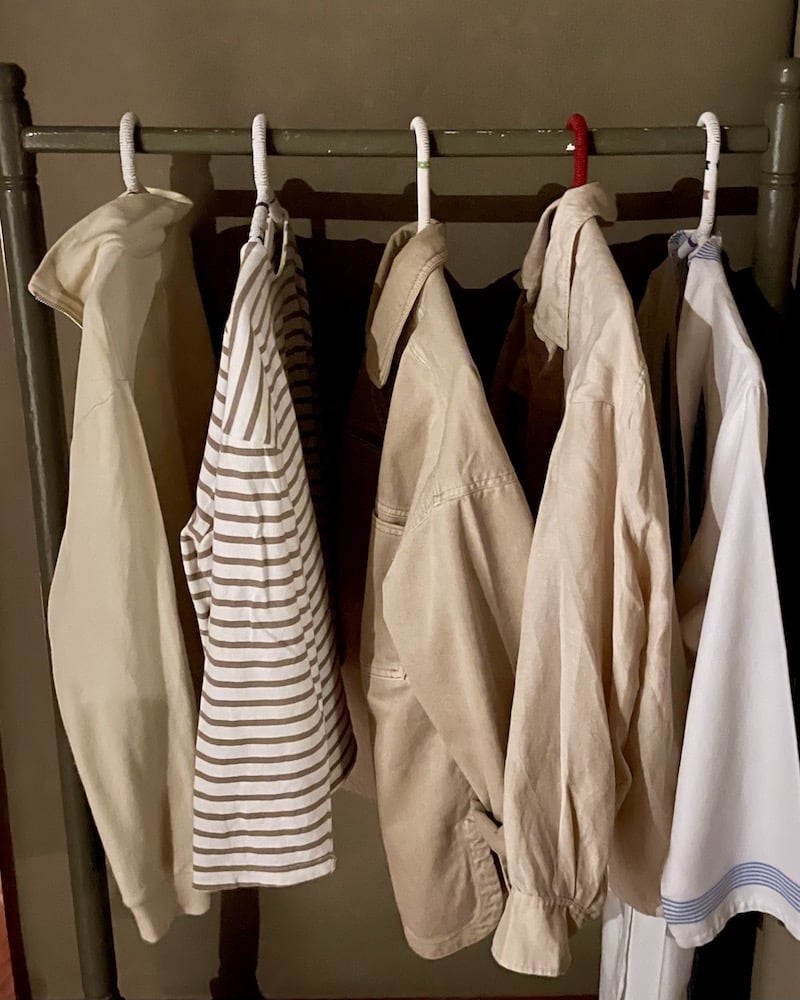
Long-Sleeved Shirts x 2
Bring some lightweight long sleeved shirts to wear on game drives in the cooler months.
- Waffle-Knit Henley T-Shirt from Gap
- Pima Ribbed Long-Sleeve Crew from Everlane
- Ribbed Henley T-Shirt from Gap
- Lyocell Blend Long Sleeve from ARKET
- Metal Vent Tech Long Sleeve from Lululemon
- Midweight Half-Zip from Lululemon
Smart-Casual Blouses/Shirts x 2
Bring a couple of long-sleeve shirts to wear during dinner on safari.
- Linen Shirt from ARKET
- V-Neck T-Shirt from Mango
- 100% Linen Shirt from UNIQLO
- Waffle Henley Long Sleeved T-Shirt from UNIQLO
- Crew Neck Long Sleeved T-Shirt from UNIQLO
Rain Jacket x 1
You may need to bring a raincoat to wear in Nairobi, if you will be visiting there during your safari. The jacket should fold up small so it can fit in your luggage. Some safari lodges will provide a raincoat, so it may not be necessary to bring.
- Women’s Raincoat from The North Face
- Men’s Packable Raincoat from Lululemon
Only bring a fleece if your safari lodge does not provide one and you are travelling during a colder month or to a colder destination. It is not needed in Samburu where it is hot.
- Ladies’ Retro Fleece from Patagonia
- Men’s Retro Fleece from Patagonia
Bottoms: What to Wear in Kenya Safari

Wearing trousers for game drives is best, particularly because you start early in the morning and finish when the sun sets.
In some locations, such as Samburu during the hottest time of year, you could wear shorts during the day on safari.
It was safe to wear shorts in this instance because I did not experience any biting insects during the day in Samburu in October.
There were flies during the day when we were by the pool at Sasaab Lodge. Plus, the restaurant had spinning fly traps on the table at lunch, but I was not bitten by any flies.
You will mostly wear shorts around the camp during downtime moments. But make sure they are in safari colours in case you want to wear the shorts on safari.
- Viscose Linen Shorts from ARKET
- Sweat Shorts from Adanola
- Dry Stretch Shorts from UNIQLO
- Cotton Shorts from ARKET
Day-Time Trousers x 2
You should bring several pairs of trousers to wear during the day on game drives.
- Stretch High-Rise Pant from Lululemon
- Relaxed Utility Pants from Abercrombie
- Leggings from Adanola
- Cargo Pant from J.Crew
- Convertible Trousers from Peter Storm
Evening Trousers x 1
Keep one pair of trousers clean to wear in the evening after a shower.
- Cargo Pocket High-Rise Pant from Lululemon
- Modern Cargo Pant from Aritzia
- Classic Fit Pant from Lululemon

Accessories
- Linen Bandana Square from Etsy
- Linen Bandana from Gap (Canada)
- Long socks for evenings
- Ankle socks (an option for the daytime)
- Swimwear x 2 (assuming your safari lodge has a swimming pool)
- Sports bra for ladies on the bumpy safari roads
- Ladies’ Super Soft Pyjamas from LAKE (my favourite brand)
- Men’s Soft Pyjama Set from LAKE
What to Wear on Safari Evenings in Kenya
One of the more difficult things to know when picking clothes to bring to Kenya is what to wear in the evening on safari. It is unclear what clothing is appropriate for dinners at camp and what temperature it will be at night.
Unless explicitly stated, you are not required to dress up formally for dinner on safari. Therefore, you can keep it relatively casual, just like your daytime safari clothes, but it is more important for the clothing to be long-sleeved. Mosquitos are most prevalent between dusk and dawn on safari in Kenya. You should also wear insect repellent.

You should bring a few clean, long-sleeved shirts for dinner. Plus, you should pack some trousers or leggings for the evening. You may want a fresh pair of clothes to change into after your post-game drive shower.
Leave the skirts and dresses at home unless you are wearing tights underneath, but even so – I would not bring these types of outfits with you.
If you are visiting several camps on safari, you do not need to bring a new outfit for each night. Truthfully, it is usually dark in the camp at night, so it is hard to see what anyone is wearing.
Evening meals are often by candlelight or dimmed lanterns.
When picking evening clothes for safari, consider a range of temperatures. Some safari locations are warm, even at night – such as Samburu. Whereas Masai Mara feels chillier in the evening.
So, bring some lighter layers, such as a linen shirt or a blouse, and a heavier long-sleeved option, such as a thicker long-sleeve t-shirt with your safari jacket on top.
Safari colours are not essential for evening meals, but I kept all my evening clothes in the same colour scheme just in case I wanted to pair them with my other clothes.
Read about the schedule of a day on safari in Kenya here.
What Bag to Take on Safari?

There are several items you will want to bring with you on safari while on game drives, and one of the easiest ways to do this is by packing a separate day bag.
There is plenty of space in the safari vehicle to place your bag at your feet or on a chair beside you. Therefore, you can bring various items in addition to a bag; such as jackets, blankets, and other extra layers.
I suggest bringing a packable bag for your daytime safari items that can be easily folded up in your luggage.
A suitable bag would be a canvas tote bag that folds up small, such as this Canvas bag from ARKET . Although this bag does not zip up, your belongings should not get too dusty.
Alternatively, bring another packable bag from your home. For example, I had an old Longchamp Le Pliage bag that worked perfectly for carrying my items on safari and packing it in my suitcase after use.
Of course, you can always bring a backpack if preferred. The backpack does not need to be particularly technical. This Osprey Dry Stuff Backpack is waterproof and packable, which means it can easily be packed inside your safari luggage.
You could also use the travel backpack you used to carry all your hand luggage items. However, you do not need to bring the entire contents of the bag with you, nor do you want to leave all those items loose in your tent.
Things to Carry for Safari
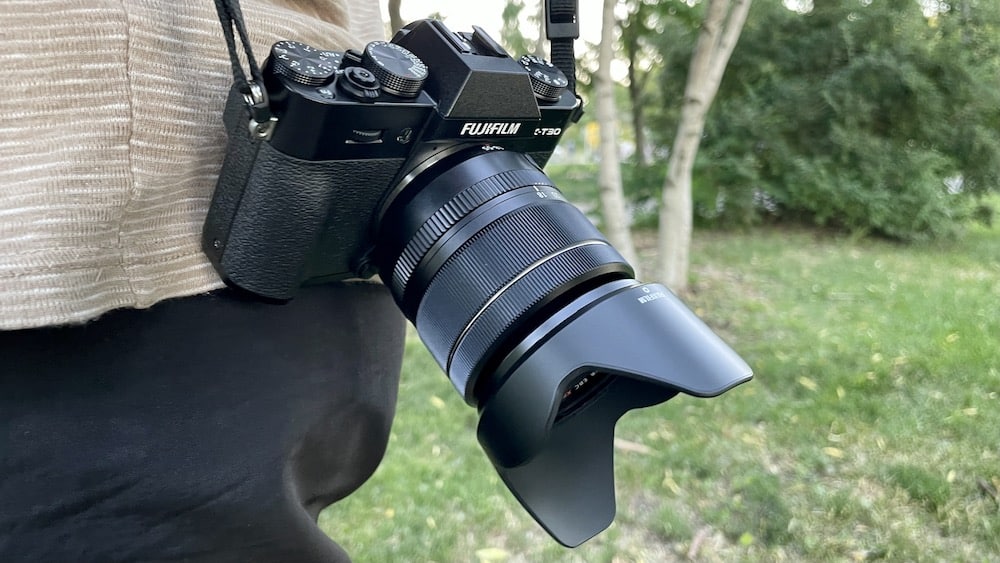
While on game drives, you may need a couple of items. Some safari vehicles will provide these already, whereas others will not. Therefore, it is best to check with your lodge beforehand.
- Camera – if you have a DSLR or mirrorless camera, make sure you bring it for the game drives. The quality is much superior to using the camera on your phone. I recommend Fujifilm X-T30 II
- Camera lens – I highly recommend renting a lens to be able to capture the animals no matter what distance you are from them
- Extra camera equipment – you may want to pack spare camera batteries or memory cards to ensure you never get caught unprepared on game drives
- Binoculars – if you are not taking photos on a camera with a good zoom, binoculars are the next best thing. Buy binoculars here
- Sun cream – you will need to apply sunscreen a few hours into your game drive as the sun gets hotter. My favourite non-oily suncreams include Ultra Violette Extreme Screen or La Roche Posay Anthelios
- Hand sanitiser – use this to clean up before eating a bush breakfast or after using the bush toilet
- Bandana or scarf – it can be very dusty on a game drive (particularly in dry parks, such as Samburu); therefore, something to cover your nose and mouth is essential
- Hat – it will keep your head warm in the chilly mornings and cover your face from the sun (wide-brim hats are best)
- Insect repellent – from dusk to dawn, there is a higher likelihood of getting mosquito bites
- Tissues – the chilly morning air can make your nose run
- Sunglasses – it is useful to have sunglasses when it is bright, although it is harder to spot the wildlife and take photos while wearing them
Read this safari packing list article to learn more about what to bring on your safari trip, including what duffle bag to pack your clothes in.
What to Wear in Nairobi Kenya?

It may be colder in Nairobi than in your other safari locations, particularly in the morning or at night. So, ensure you have clothes that you can layer up to start and end your day.
Most Nairobi hotels have a pool, so remember to pack some swimwear and clothes to wear to walk to the pool.
A pair of comfortable trainers work best in Nairobi. Stick to closed-toed shoes for the entire Kenya trip, except for sandals or flip-flops for the camp, by the pool, or at a beach.
In Nairobi, you are out of your safe cocoon of the safari lifestyle; therefore, you need to keep your wits about you. Try to blend in with the crowd and avoid heavy slogans or bright, eye-catching outfits.
Depending on what you are doing in Nairobi, your clothes that can get dusty or dirty. Some of the best things to do in Nairobi involve getting a little mucky, such as visiting the baby elephants at Sheldrick Wildlife Trust and a tour of Nairobi National Park .
You may have limited luggage space, so it is ideal to wear your “safari-style clothes” in Nairobi, with a couple of additions. For example, a pair of jeans for evening meals may be appreciated.
This article will help you choose whether to book meet and greet services at Nairobi airport .
FAQ – What to Wear in Kenya on Safari?
What to wear on a safari in kenya.
Your Kenya safari clothes should be casual and in neutral colours like khaki, green, brown, beige, or grey to blend into the savannah.
It is best to dress in layers, as the mornings and evenings can be cool, and the daytime can be warm. Closed-toed comfortable footwear is essential.
How to dress in Nairobi?
While in Nairobi, stick to neutral colours to blend in, and avoid flashy or eye-catching outfits. If you plan to visit any wildlife reserves, you may get dusty or dirty, so avoid wearing white in case it stains.
You may need an extra layer for the early mornings and evenings when it is cooler.
What colours not to wear in Kenya on safari?
Your safari wear should not include the following colours white, black, navy, and other bright colours (e.g. red and blue). These colours may distract the animals or attract biting tsetse flies.
It is also illegal to wear camouflage clothing in Kenya.
Samantha is the founder of Continuous Roamer, a travel website focusing on adventure and the outdoors.
With a love for adventure and the great outdoors, Samantha shares tips on skiing, luxury safaris, camping, and finding hidden food gems in different destinations.
With over 20 years of skiing experience across Europe, North America, and beyond, she's also an expert in luxury accommodations and experiences.
Whether camping in Canada or dining in a Michelin-starred restaurant, Samantha always seeks out the best experiences and accommodations, and her blog highlights the best of them for her readers.
Samantha is currently living in London.
Similar Posts

Nairobi Airport Services: Meet and Assist – Is it Worth it?
Arriving at an airport for the first time in a foreign country can be daunting. Therefore, sometimes you need a…

Is a Nairobi National Park Tour Worth it?
You may not have heard of Nairobi National Park and be surprised to learn that it is possible to go…

What Happens on a Typical Day on Safari in Kenya?
Before your first safari in Africa, it is hard to imagine what to expect. You may have some ideas about…

What to Expect When Visiting Sheldrick Elephant Orphanage Kenya?
If you are visiting Kenya for a safari, you will likely be flying in or out of one of the…

What You Need on Your Packing List for Safari in Kenya
Safari travel is supposed to be exhilarating, breathtaking, and unforgettable. However, if it is your first safari experience, it can…

Where to Stay in Nairobi Kenya? 5 Best Hotels You Need to Consider
Nairobi, the vibrant capital of Kenya, is an excellent pre-safari destination because it boasts convenient connections to many national parks…

Women's outdoor safari shoes, safari boots, & safari sandals
From tough and sturdy walking safari-styled shoes and boots to easy-wearing pumps and sandals, our footwear range combines fashion and practicality for every facet of your safari.
- Safari Clothing
- Womens Shoes & Boots
- Boys & Girls
- Trousers & Shorts
- Jackets & Fleeces
- Safari Hats
- Beanies & Scarves
- Dresses & Skorts
- Shoes & Boots x
- Socks & Ankle Gaiters
- Holdalls & Duffle Bags
- Weekenders & Carry-ons
- Backpacks, Satchels & Small Bags
- Toiletry Bags for Travel
- Totes & Champagne Coolers
- Business bags
- Luggage Trolley
- Pannier Bags
- Pet Feeders
- Locks & Scales
- Gift Vouchers
- Books & Maps
- Multi-tools
- Insect Repellent
- Torches (flashlights)
- Straps & Mounts
- Trophy Cameras
- Binocular Photography
- Cleaning Kits
- Essential Accessories
- Travel Essentials
- Travel Adaptors
- Evenings, Outdoor & Travel Clothing
- Outdoor, Travel & More
- Safe drinking water
- Rufiji™
Womens Safari Shoes & Boots Read our Womens Safari Shoes & Boots Advice Guide
- If you are going on a classic game drive type of safari, then pack comfortable women's safari shoes to wear on game drive but which are able to double as good walking shoes for a walk in the bush - an activity we highly recommend. Note that if you do not have walking shoes with you on game drive then your guide may decide against a quick impromptu walk in the bush
- Also take a pair of women's safari shoes to wear around the camp. These may be the same pair as your select for the above, but it may also be a pair of cooler sandals, pumps, or similar.
- For full-on walking safaris make sure you take women's safari shoes which are made for longer hikes - and ensure that you walk them in properly before you go on safari. You may prefer low rise canvas trail shoes or leather higher rise boots - the preference is purely personal.
- If you are going on a walking safari in sandy areas (check with the walking safari company you have booked with) then we suggest that you pack higher rise boots with a built in tongue - such as our Rufiji™ APU Safari Combat Boots - as this will minimise the amount of sand which goes into the shoe which will cause discomfort.
- We would still take a a pair of cooler women's shoes or sandals for before and after walks when around the camp.
- Safari tip: always check your shoes for small snakes, scorpions, spiders and insects before putting them on.
Rufiji™ Explorer Safari Veldskoen Shoes in Ruaha Rust
Rufiji™ explorer safari veldskoen shoes in kalahari khaki, rufiji™ apu combat safari boots in wildebeest brown, the buffalo boot in buffalo brown, veldskoen desert safari boots in khaki, women's leather safari sandals in brown.
This website uses cookies for it's shopping basket, you must have cookies enabled in order to use this site.

IMAGES
COMMENTS
A hybrid sandal is a popular choice amongst travellers. Our Rufiji™ Leather Safari Sandals are African-made for African adventures - a shoe women will love on safari and at home. Safari-styled footwear: Our Rufiji™ Explorer Shoes (thin sole and original sole) and high-top Veldskoen Desert Boots are also made in Africa for Africa ...
New Balance Women's FuelCore Nergize V1 Sneakers. 6. Marketed as lightweight women's sneakers, New Balance Women's FuelCore Nergize V1 Sneakers are one of the best shoes for a safari you can buy today. The shoes are made of mesh fabrics and synthetic fabrics as well.
The best shoes for a Kenyan safari are hiking shoes like the KEEN Women's Targhee II Hiking Shoe. Most hiking shoes are lightweight, durable, can be used for everything from light walking to hiking. Hiking shoes score really well on all of the metrics of a Good Shoe for Safari and are a great shoe to take on a Safari.
Regardless, the Columbia Newton Ridge Plus II offers a fantastic combination of practicality, affordability, and comfort, making it a decent choice for anyone seeking a reliable safari boot. Although, if it were our money, we'd spend more to get the Moab 3 Boots. Columbia Newton Ridge II Boot. Women's. Columbia.
6 Best Hiking Boots for African Safari. Blundstone BL550 Classic 550 Chelsea Boot. Danner Men's Mountain 600 Hiking Boots. Red Wing Men's Iron Ranger Hiking Boots. Merrell Men's Moab 3 Hiking Boots. Dr. Martens 1460 Originals Hiking Boots. Lowa Renegade GTX Hiking Boots.
Safari Men's Boots Details and Price in Kenya Men's formal shoes for official or smart casual functions. This formal shoe offers a fashionable look that is a trend in the global market with premium construction and finishing for that executive look. A good safari boot is the one thing that is a must when it comes to safari wear and bushwalks.
Safari was born out of Kenya in the 1960s, and decades later, we are still committed to offering you the finest quality footwear, made of Africa. ... The right pair of shoes can make all the difference. Complete your look with the Safari Mens Adventure boot. Available online on www.zando.co.za
Shop for Men Safari Boots from a Huge Collection - Get Best Men Safari Boots Online from Jumia Kenya | Fast Delivery - Free Returns. ... Safari Mens Boot Safari Rebrand Shoes. KSh 2,599. 5 out of 5 (4) Add To Cart. Bata Comfit BATA SAFARI BOOTS SZ. KSh 14,645. Add To Cart. Official Store.
Our Top Picks Best Safari Shoes. Rockport Men's Storm Surge Water Proof Plain Toe Boot. Why We Love Them. ... How Much To Tip Kenya Safari Guide. safaris July 24, 2022. Masai Mara or Amboseli Where To Go. safaris June 20, 2022. Is Kruger or Serengeti better. Places March 16, 2022. POPULAR CATEGORY. Tips 32;
Cash on DeliveryCredit Card. Delivery fees are 150-32000 KSh, with delivery expected within 1-11 day (s) Similar products to Bata Comfit BATA SAFARI BOOTS are sold at Jumia with prices starting at 5,250 KSh. The first appearance of this product was on May 01, 2023. Amongst similar products of Bata Comfit BATA SAFARI BOOTS the cheapest price is ...
Safari Boots Details and Price in Kenya Men's formal shoes for official or smart casual functions. This formal shoe offers a fashionable look that is a trend in the global market with premium construction and finishing for that executive look. A good safari boot is the one thing that is a must when it comes to safari wear and bushwalks.
This guide covers the best African safari clothing for Kenya safaris to help you plan the ultimate trip. Toll Free Numbers: 1-888-414-6513 -808-189-1052, All Other ... Covering up from mosquitos and insects is one reason closed-toe shoes are also strongly advised when it comes to what to wear on safari in Kenya. It's also more practical and ...
Salomon, one of the Best shoes for African Safari in Kenya. Another brand this list couldn't be complete without. The Salomon XA PRO 3D Trail Running Shoe is simply ideal when it comes to the best shoes for African Safari. Salomon has been making outdoor shoes, since 1947 and you can never go wrong with this.
3 Best Safari Shoes for Women. #1 I know I keep banging on about them, but it's just so hard to beat a good pair of Arizona Birkenstocks if you're looking for the perfect safari sandal ladies. #2 For a good walking shoe, I just think North Face Litewave are a lovely light and stylish option for women.
Companies. Bata Kenya spruces up popular Safari Boot brand to boost sales. Tuesday July 07 2009. A Bata shop attendant shows off a pair of newly launched Safari Boots. /Frederick Onyango. Three ...
Shop for Bata Shoe Store Online from a Huge Collection - Get the Best Deals & Offers on Bata Shoe Store from Jumia Kenya | Fast Delivery - Free Returns. ... Safari Mens Boot Safari Rebrand Shoes. KSh 2,599. 5 out of 5 (4) Add To Cart. Official Store. Bata White Unisex Bullets. KSh 999. 4.4 out of 5 (23) Add To Cart.
The weight restrictions are to be taken seriously. On safari, your limit is a 15kg bag (33 lbs), and that includes both your checked bag and your hand luggage. The ideal checked bag is a soft-sided duffel that can fit into the luggage hold of the plane and can be transported in open safari vehicles on the ground.
Other Shoes to Wear in Kenya Safari. Flip-flops or sandals - it is worth bringing a separate pair of shoes to wear around camp during the day. If it is warm your feet will want a breather from wearing socks. Closed-toed shoes for dinner - you may want to wear a separate, fresher pair of trainers in the evening to dinner after you have ...
Women's Leather Safari Sandals in Brown. £49.00. Shop women's outdoor safari shoes, sandals, & safari boots. From long walks to casual dinners, we stock a range of women's sandals, pumps, trainers, & boots.
Enjoy safe shopping online with Jumia Best prices in Kenya Fast DELIVERY & Cash on Delivery Available Order now! ... Safari Men's Shoes. Sort by: Popularity. Popularity Newest Arrivals Price: Low to High Price: High to Low Product Rating. 1 products found. Official Store.